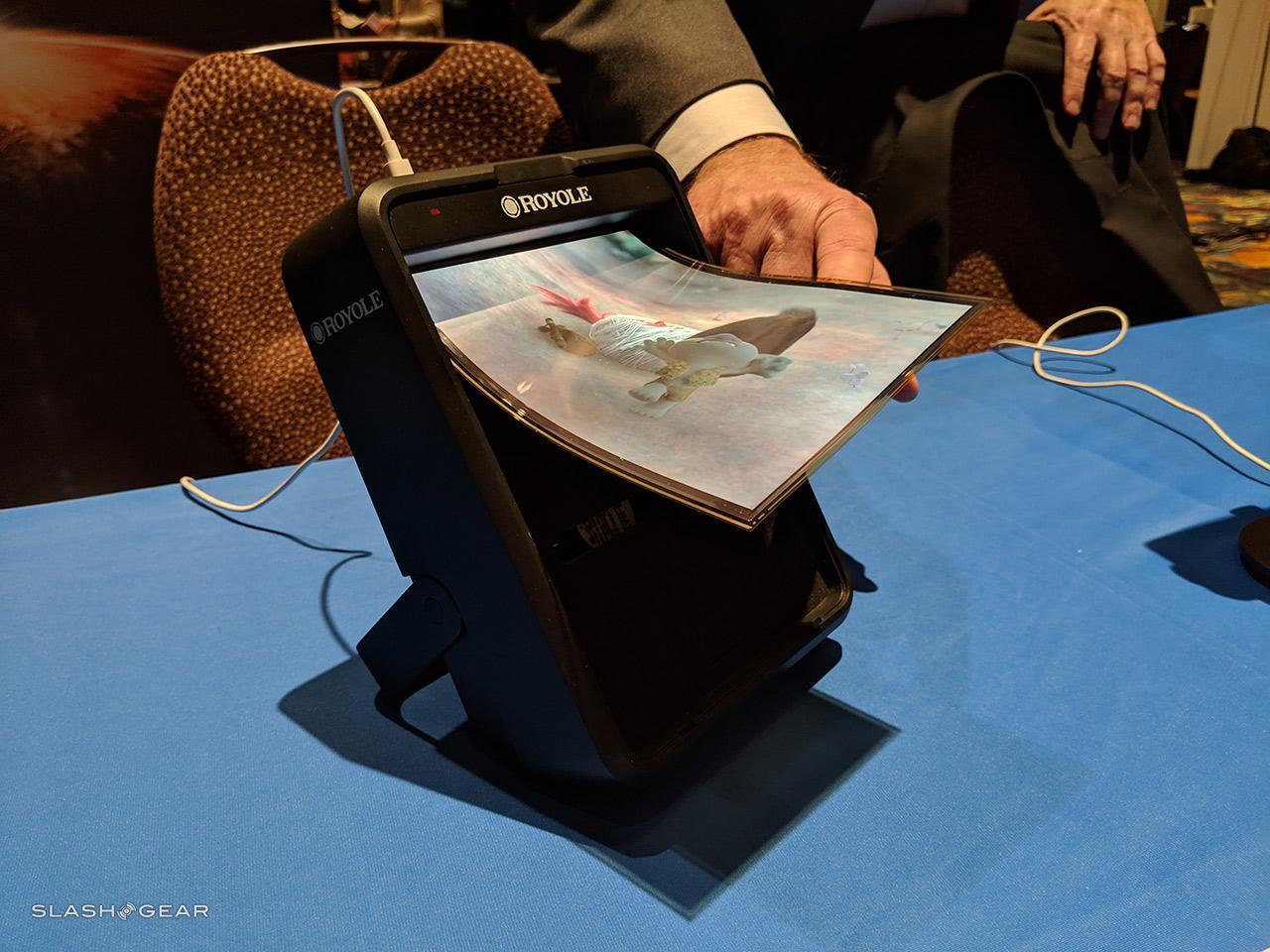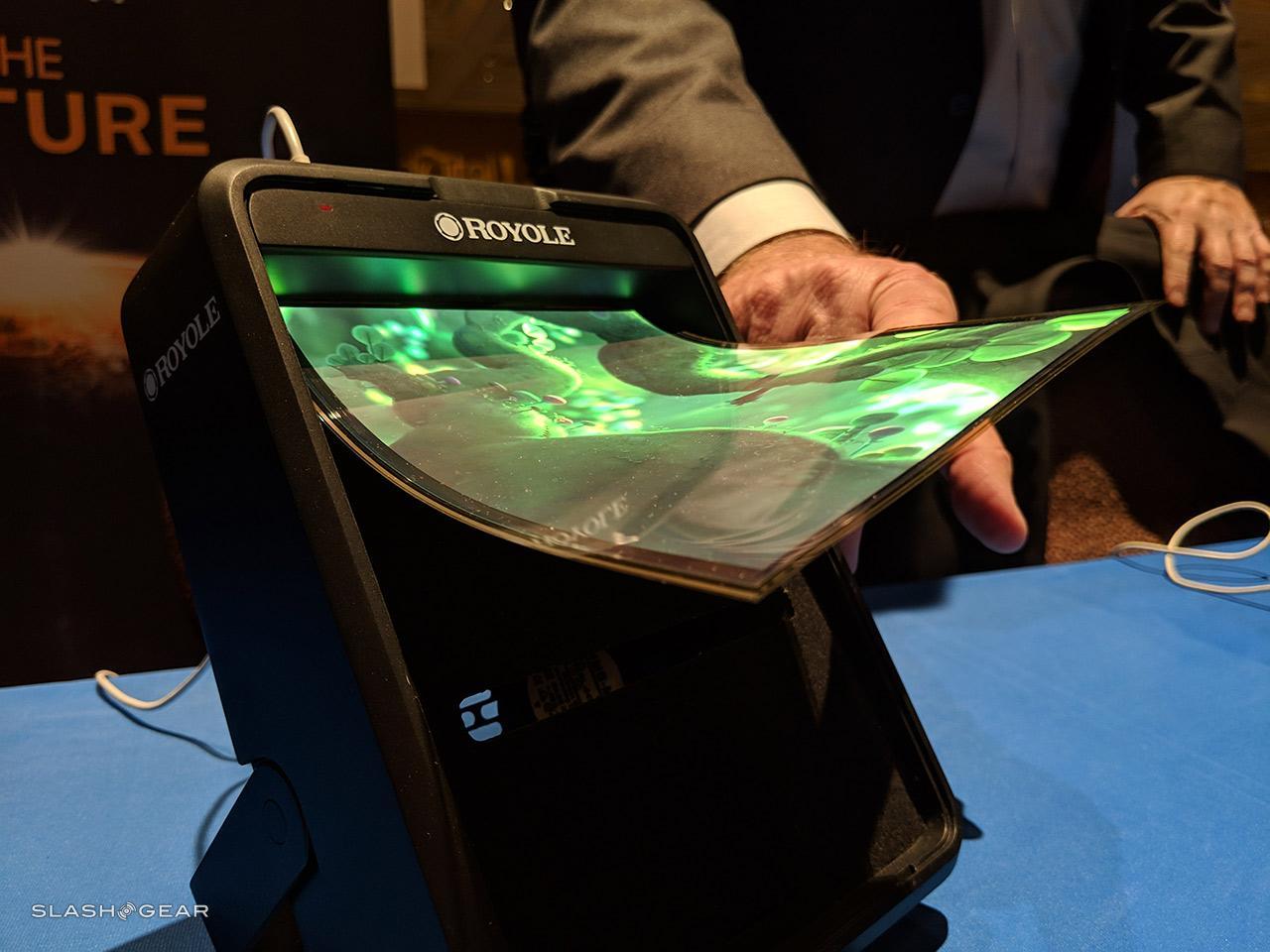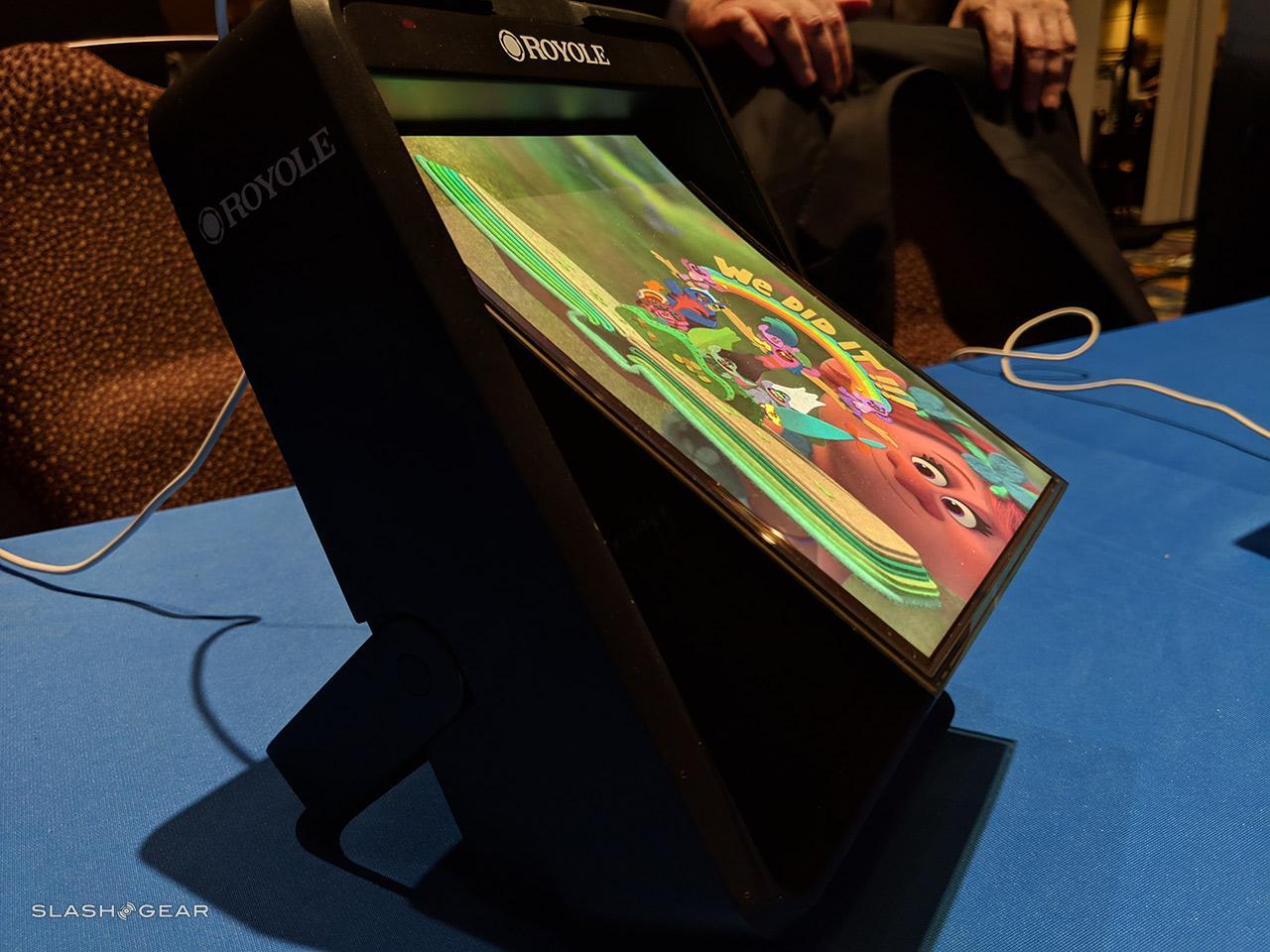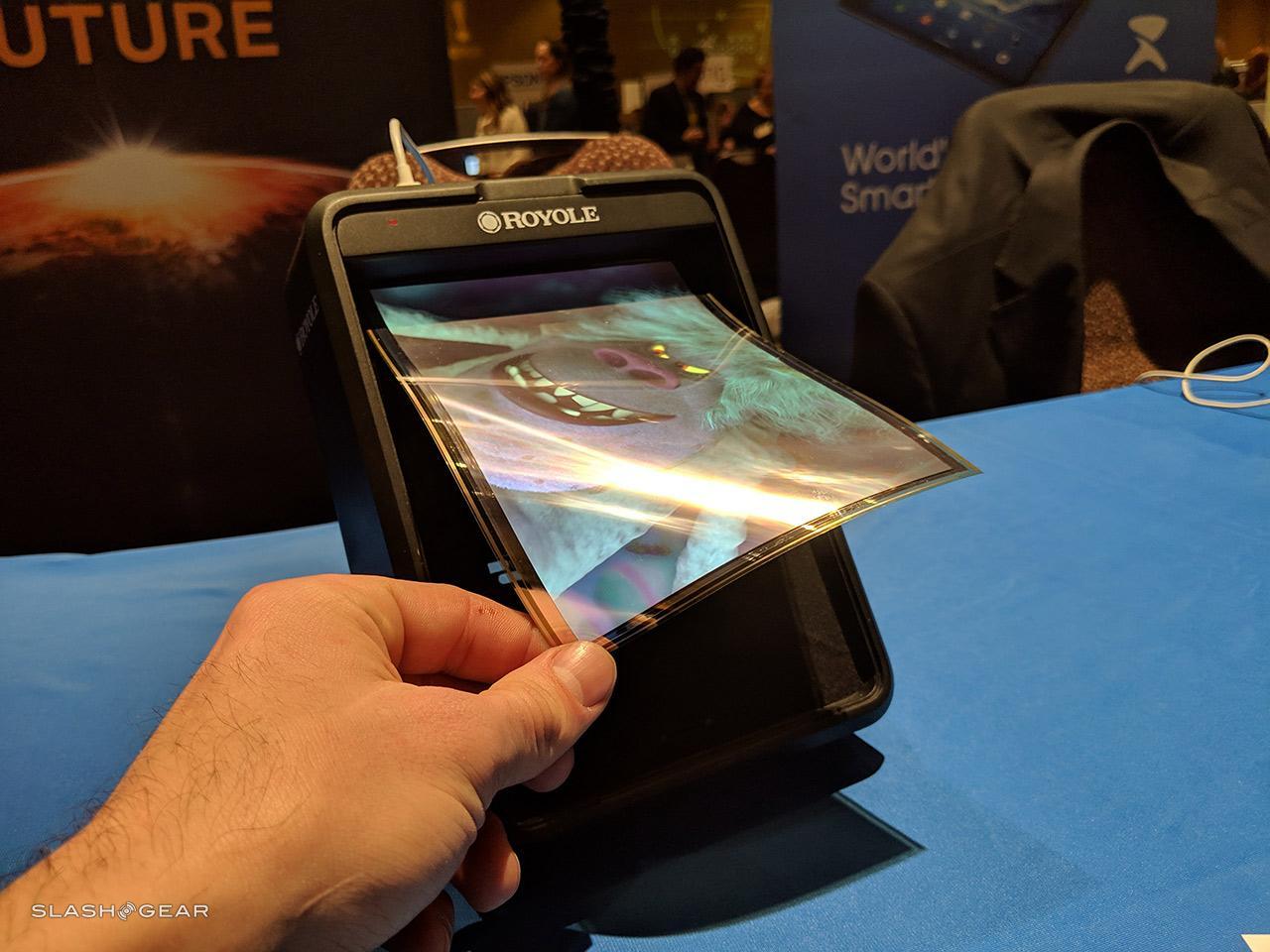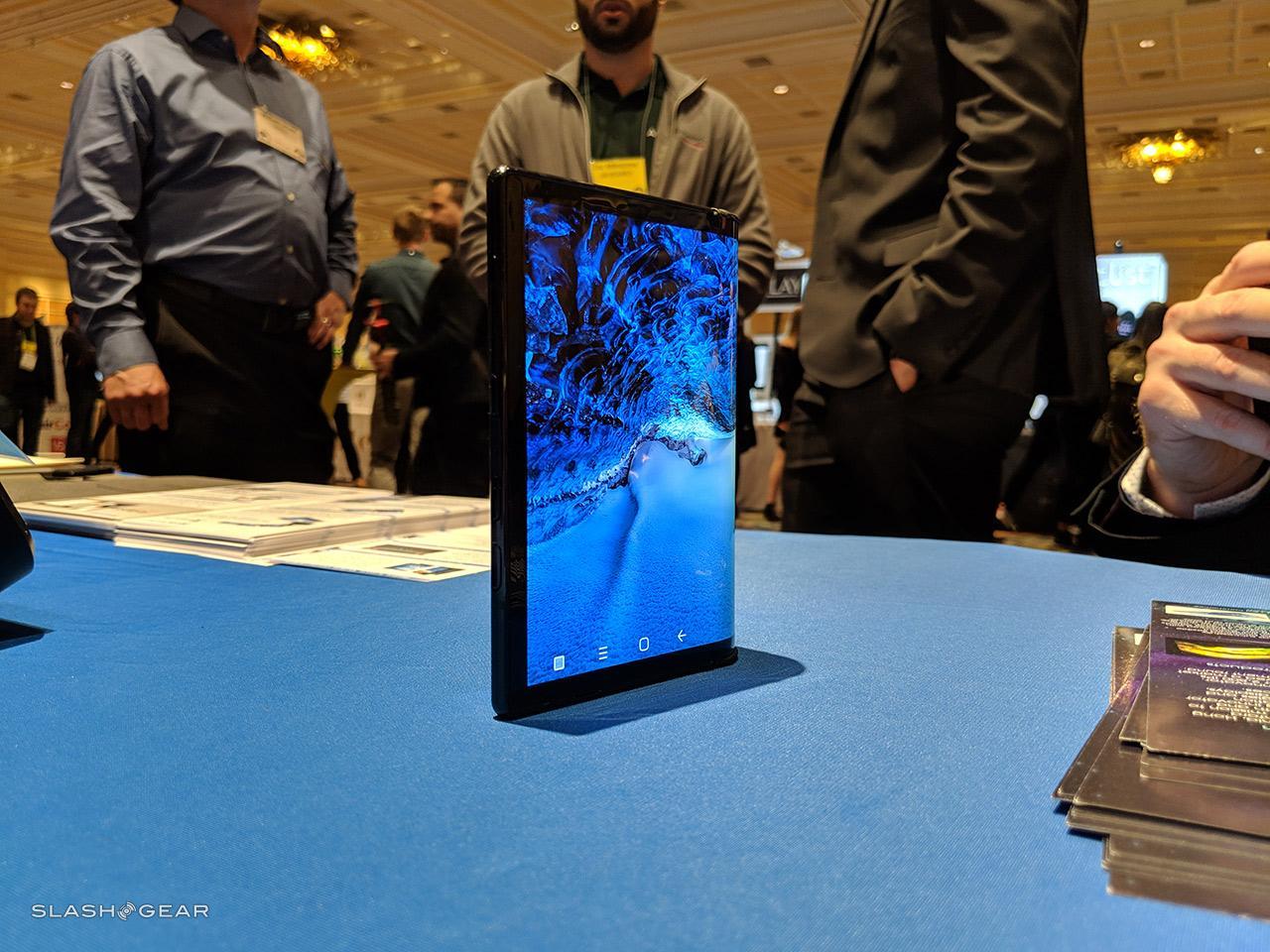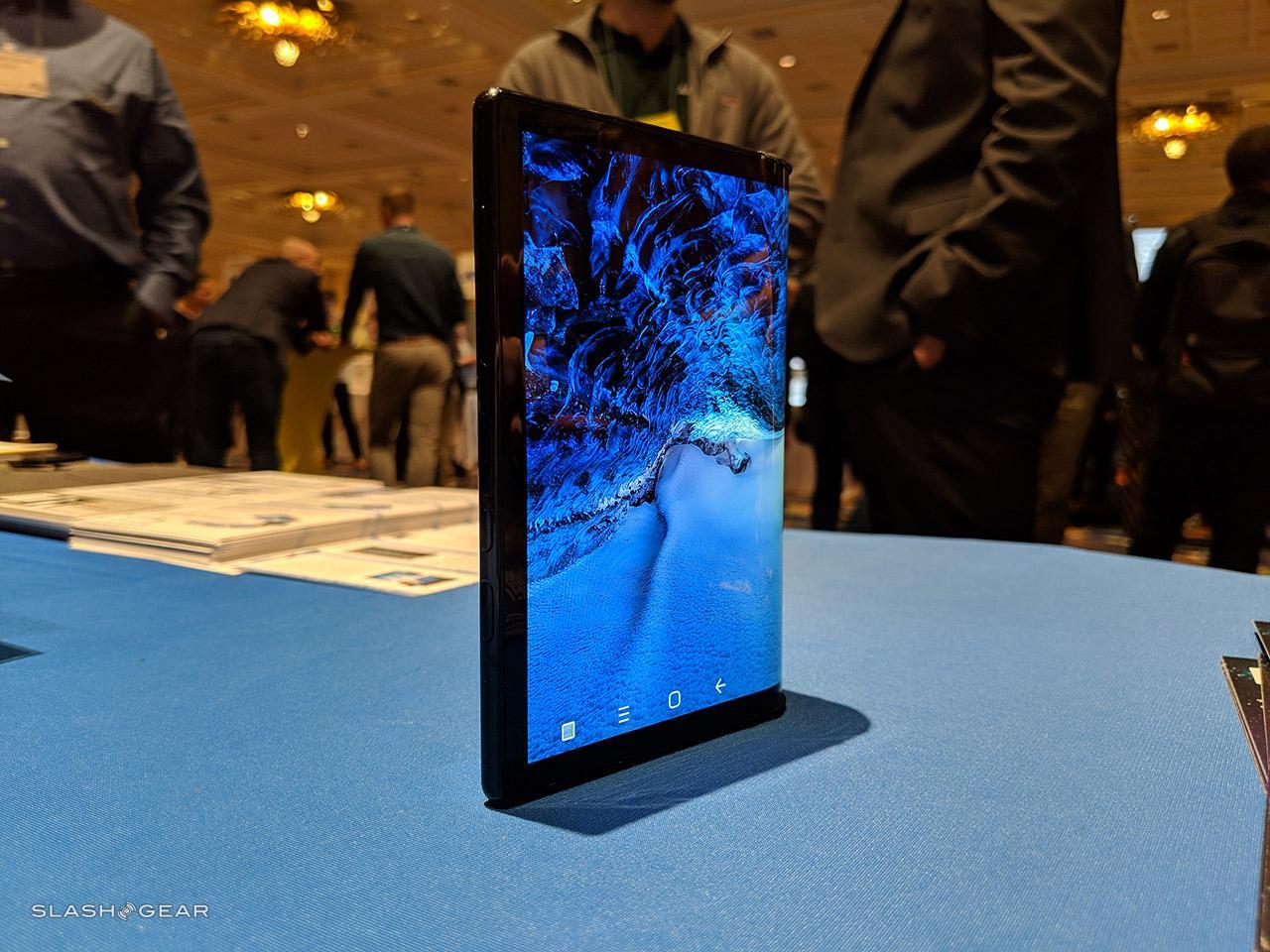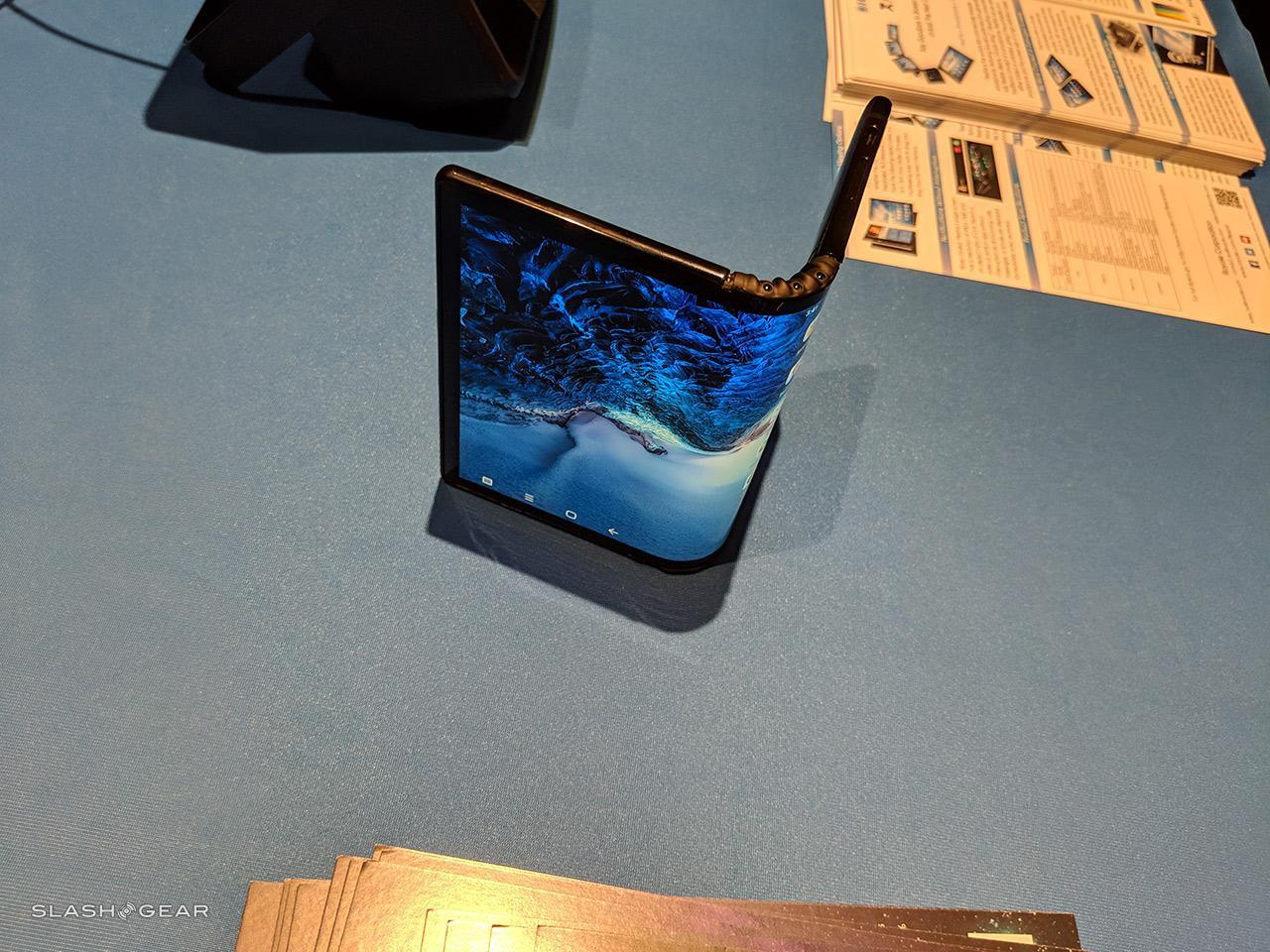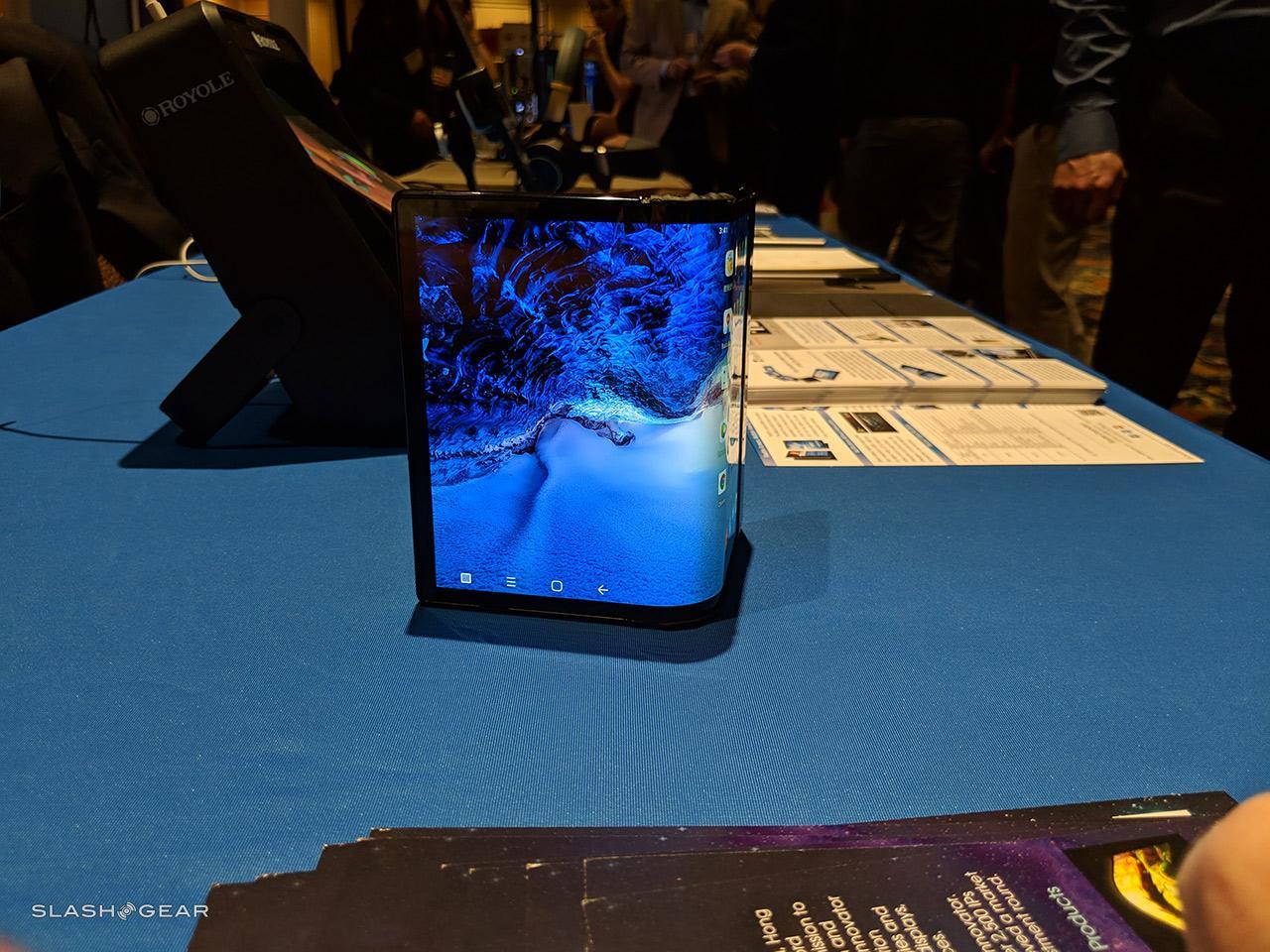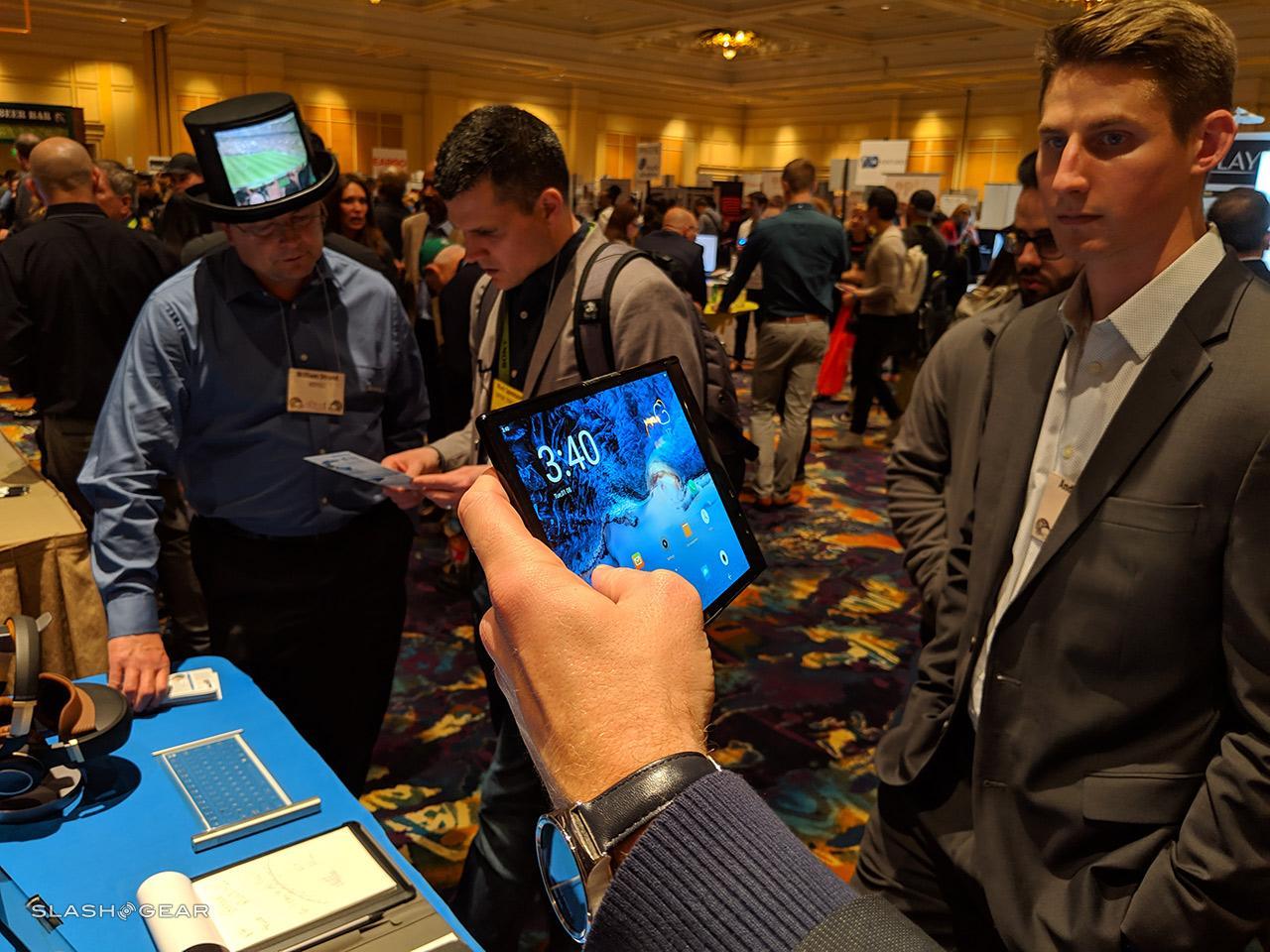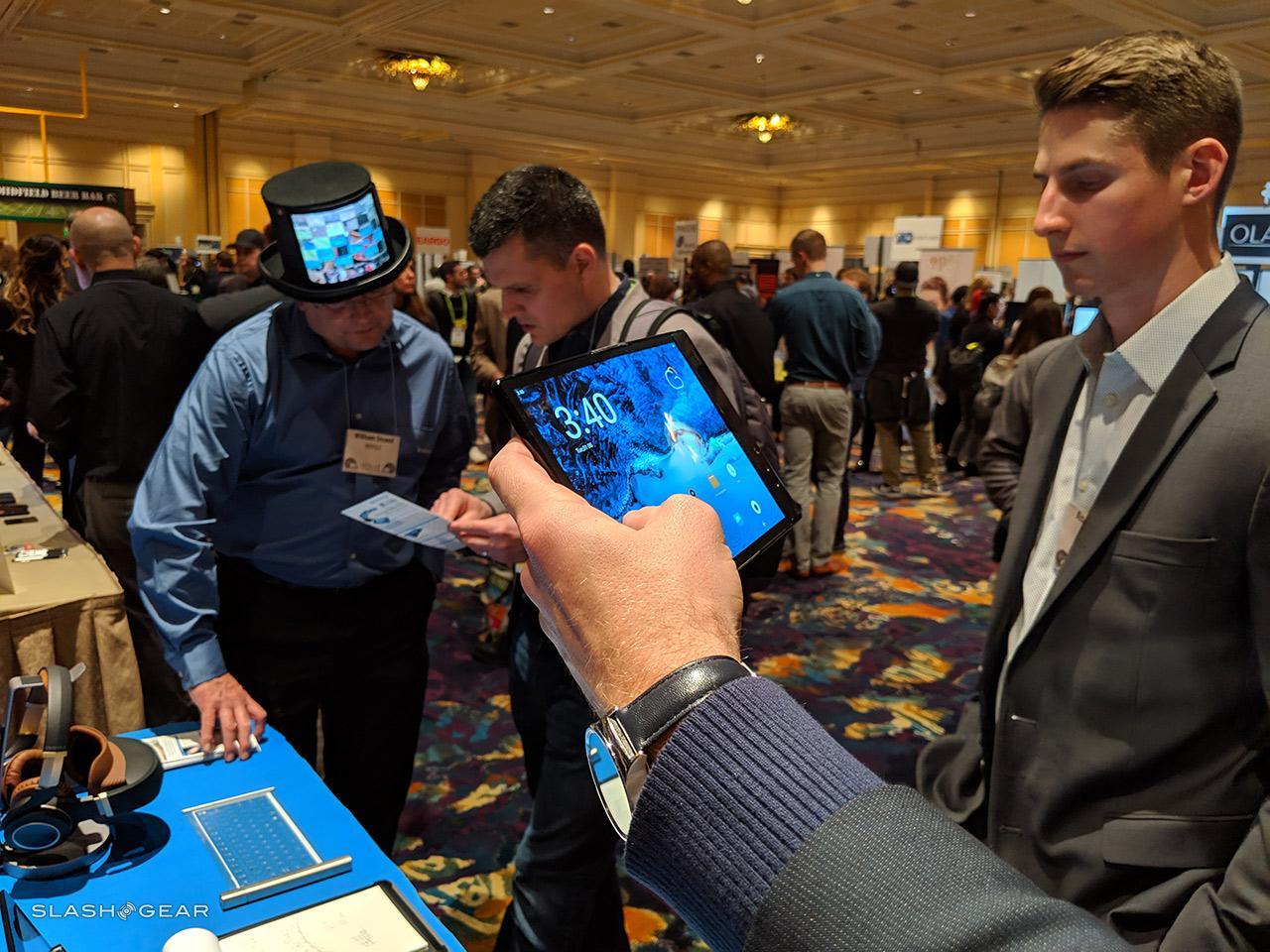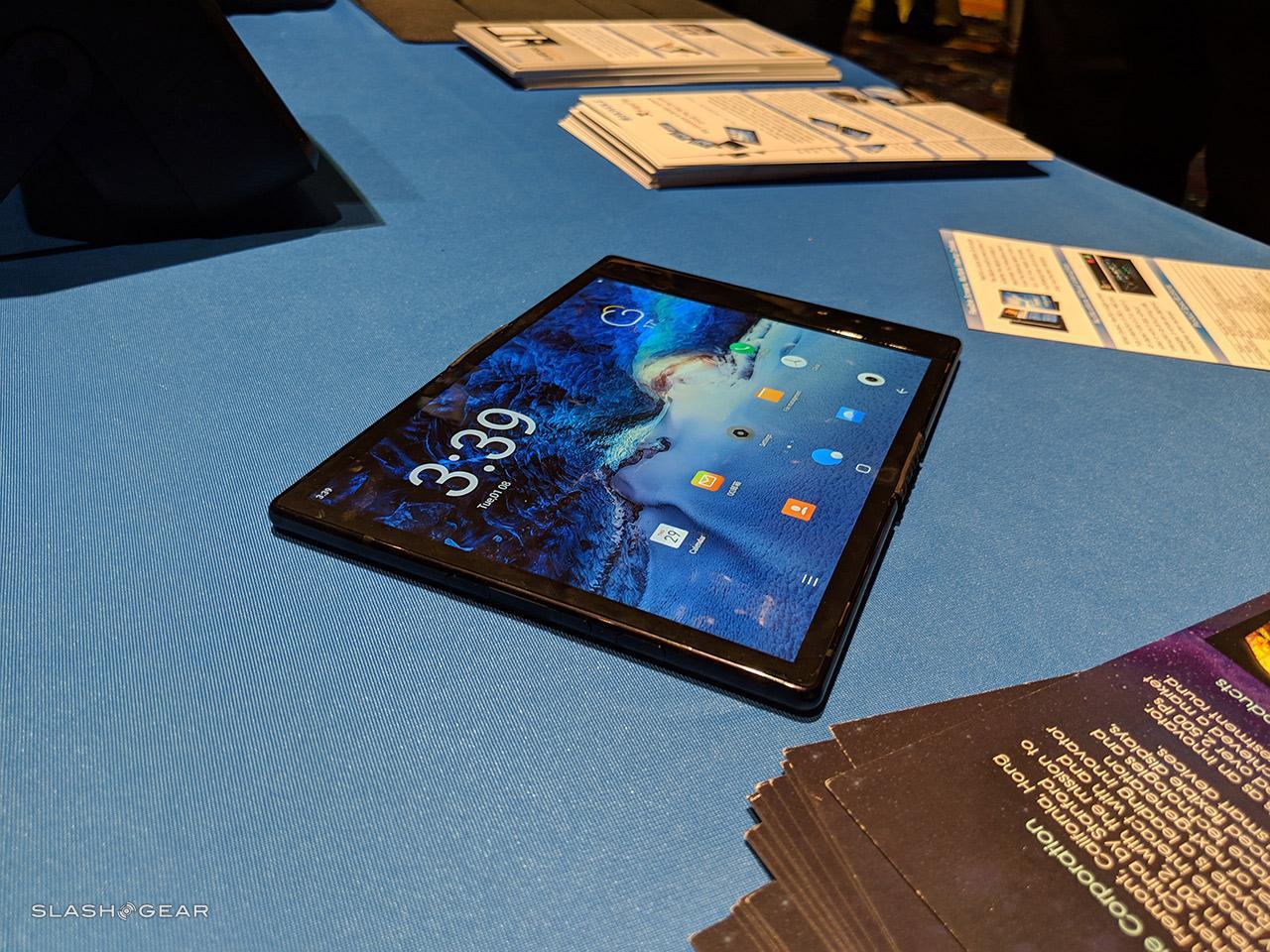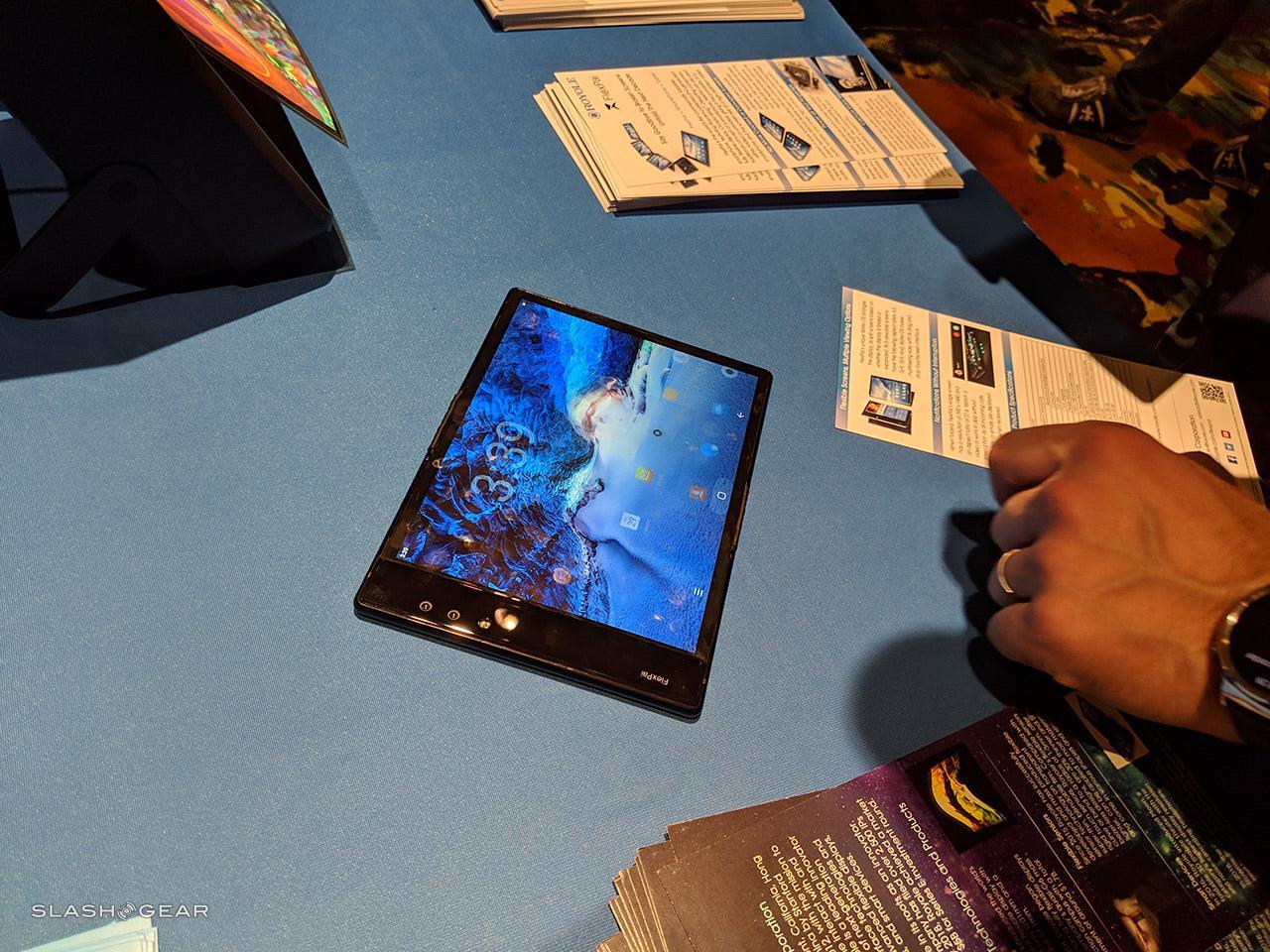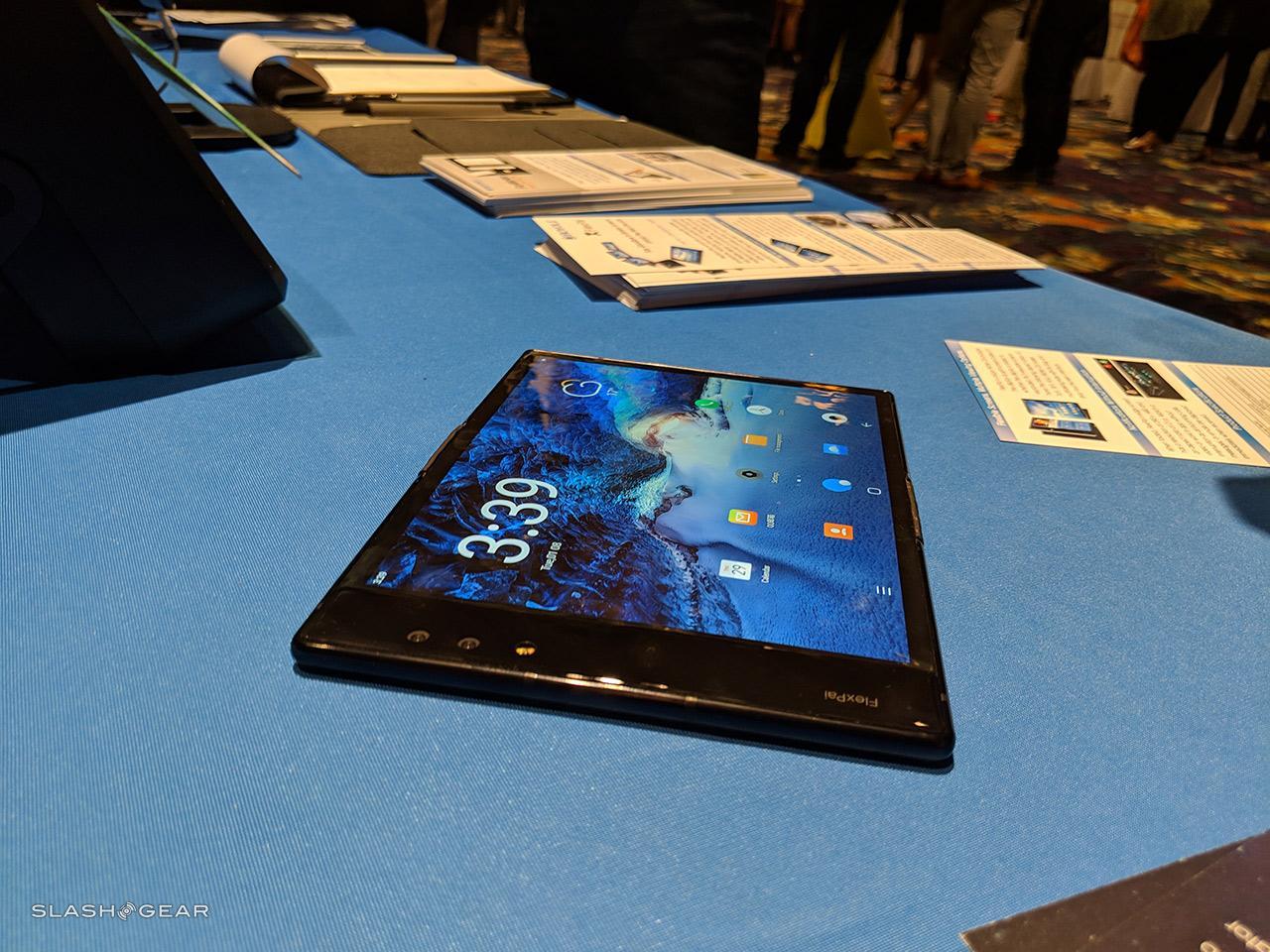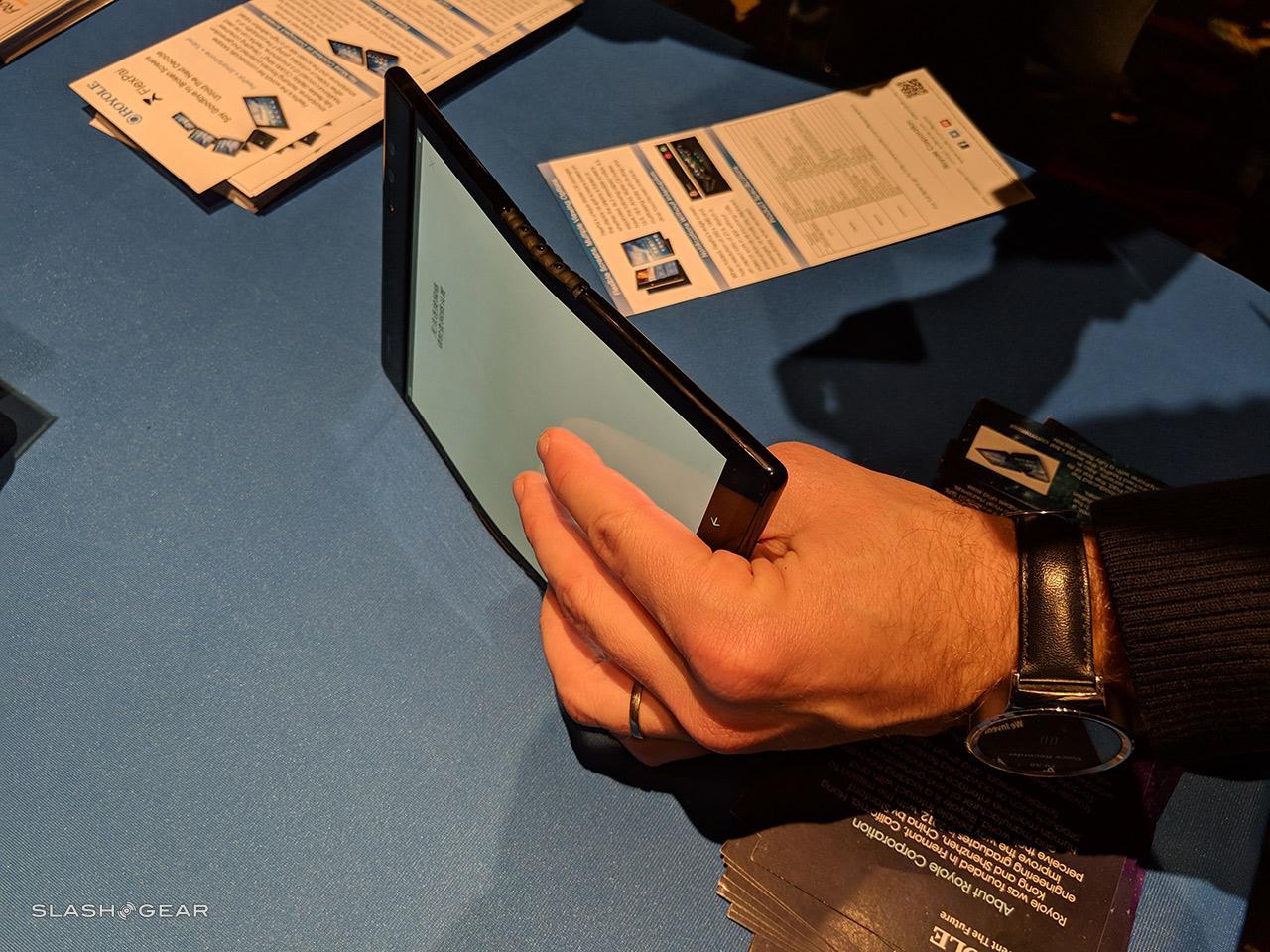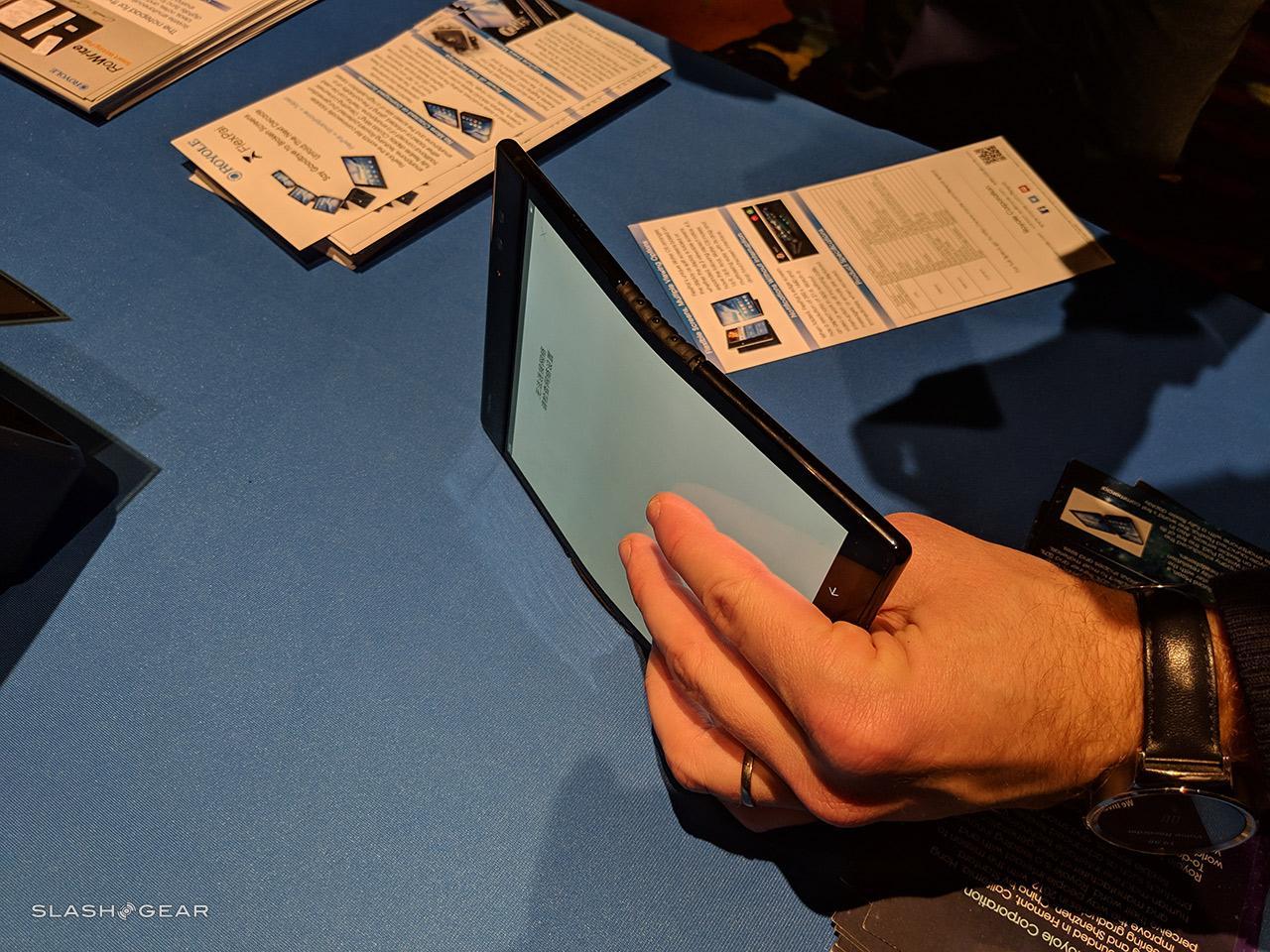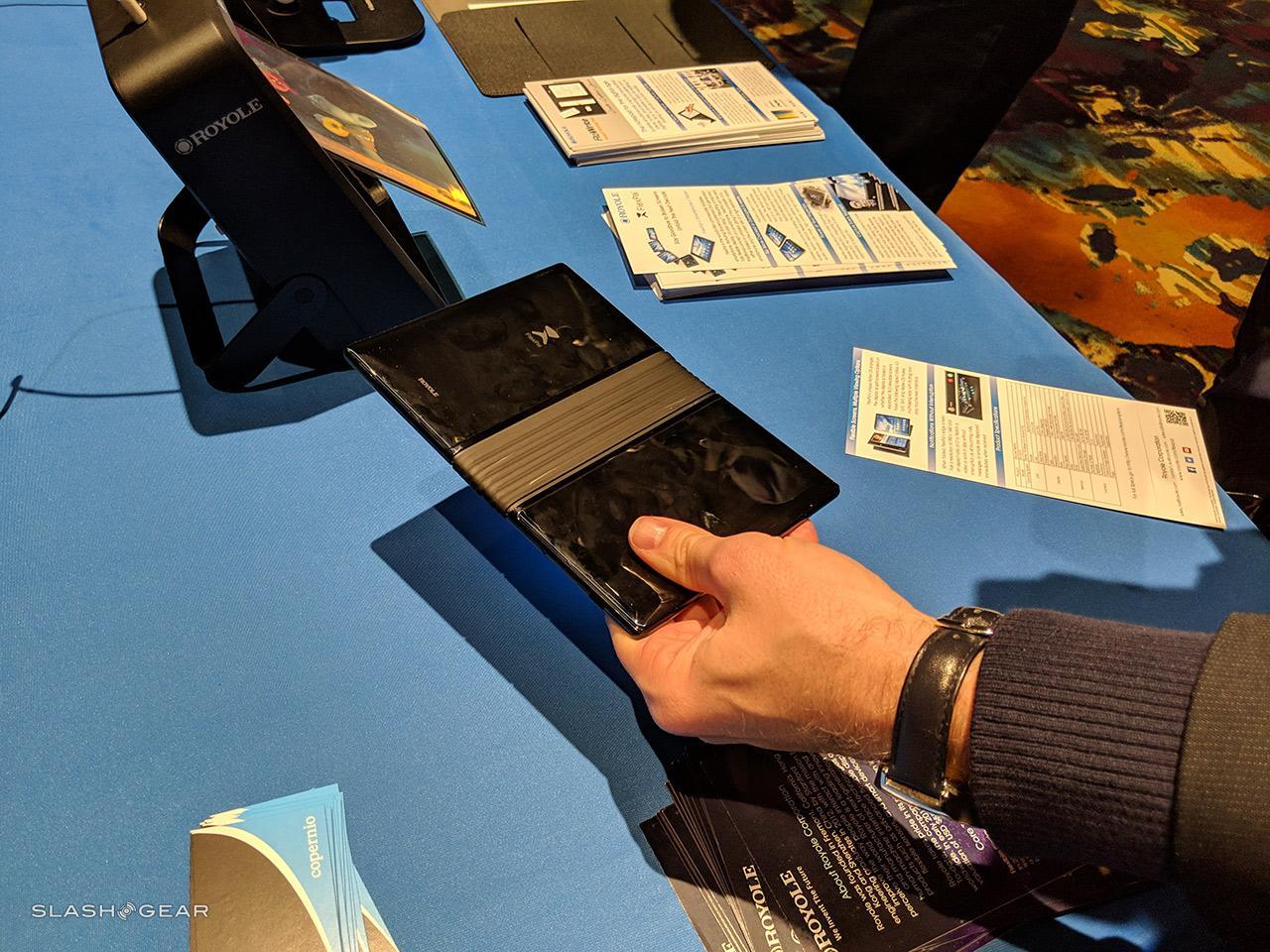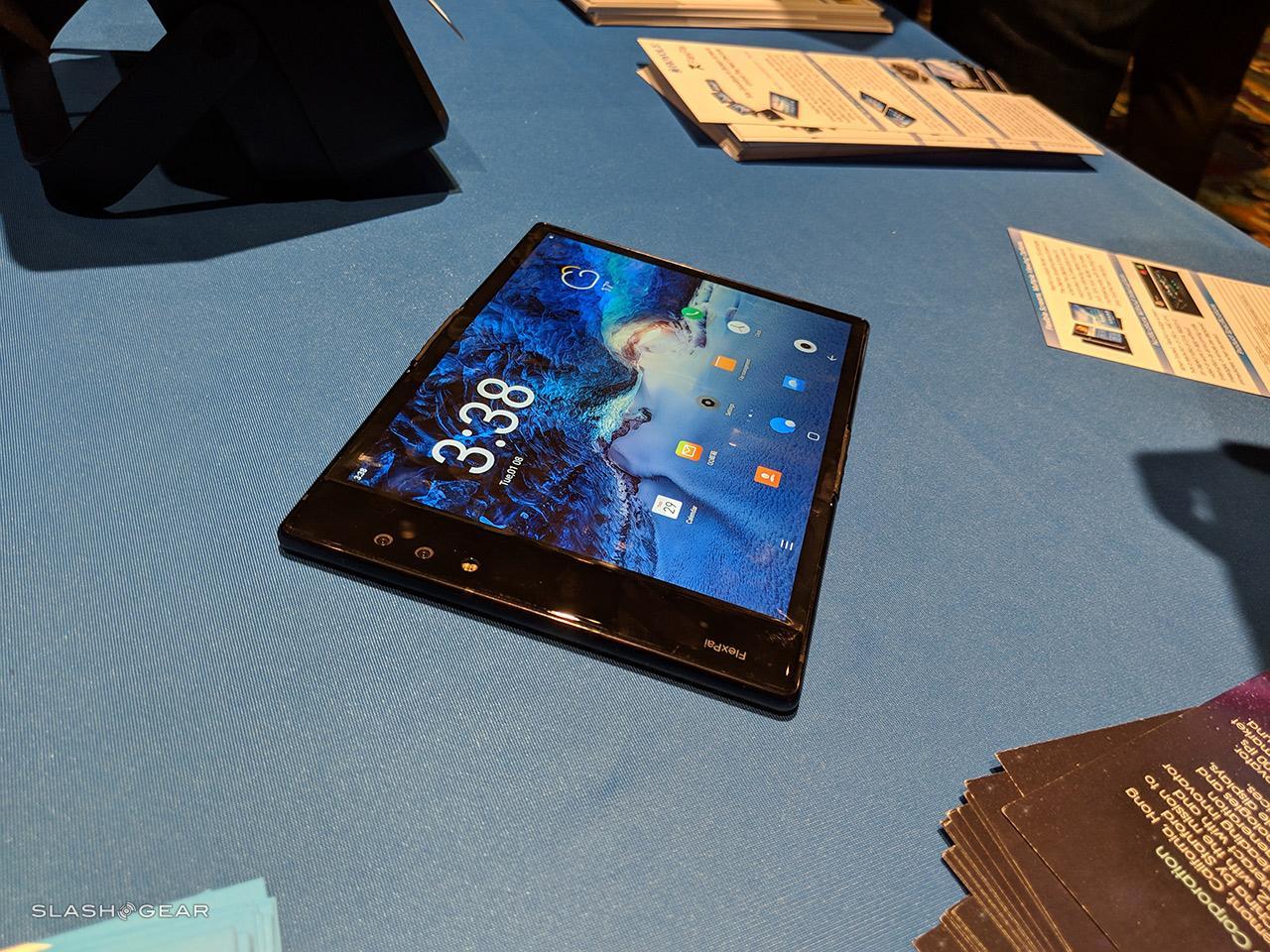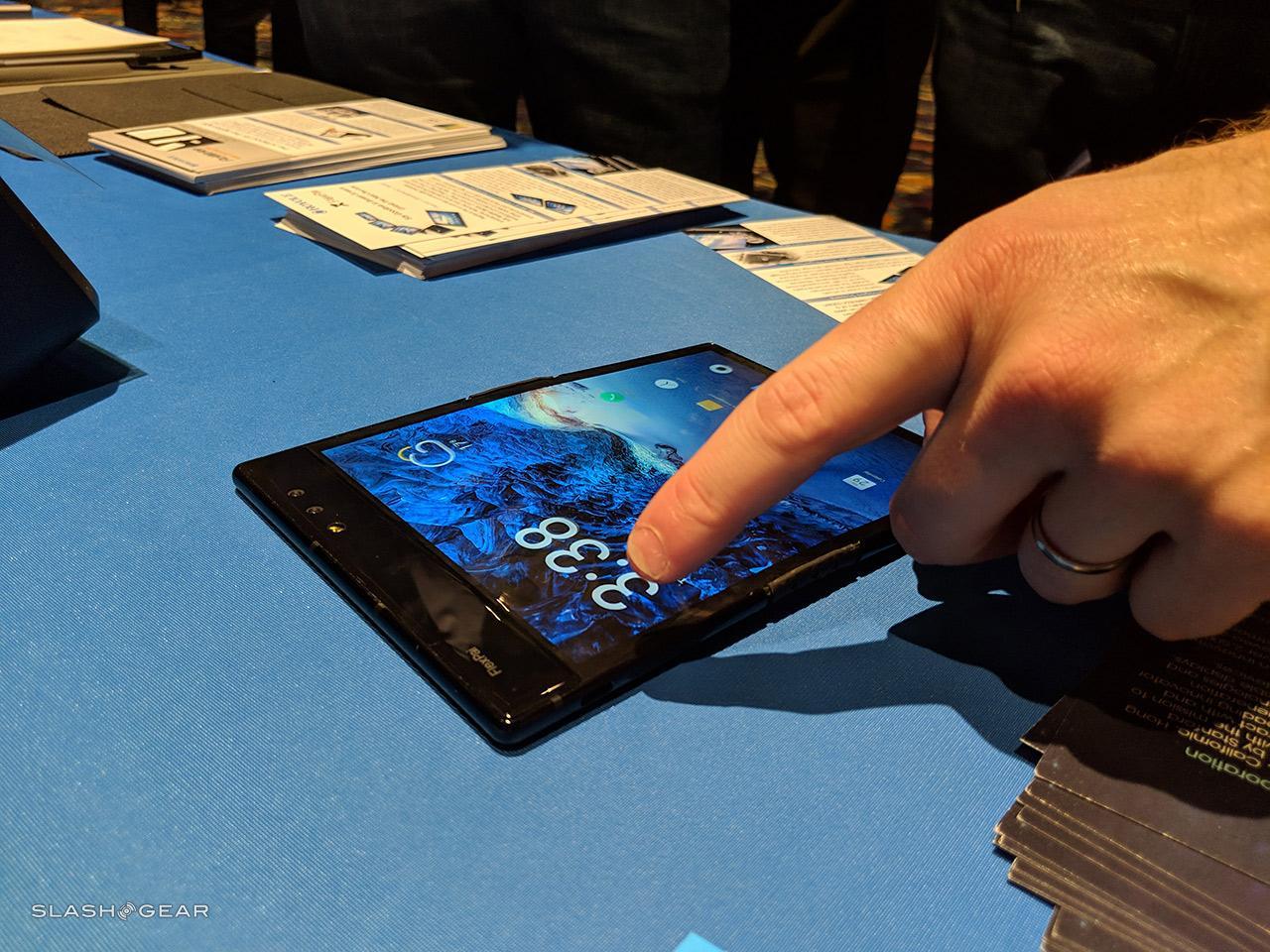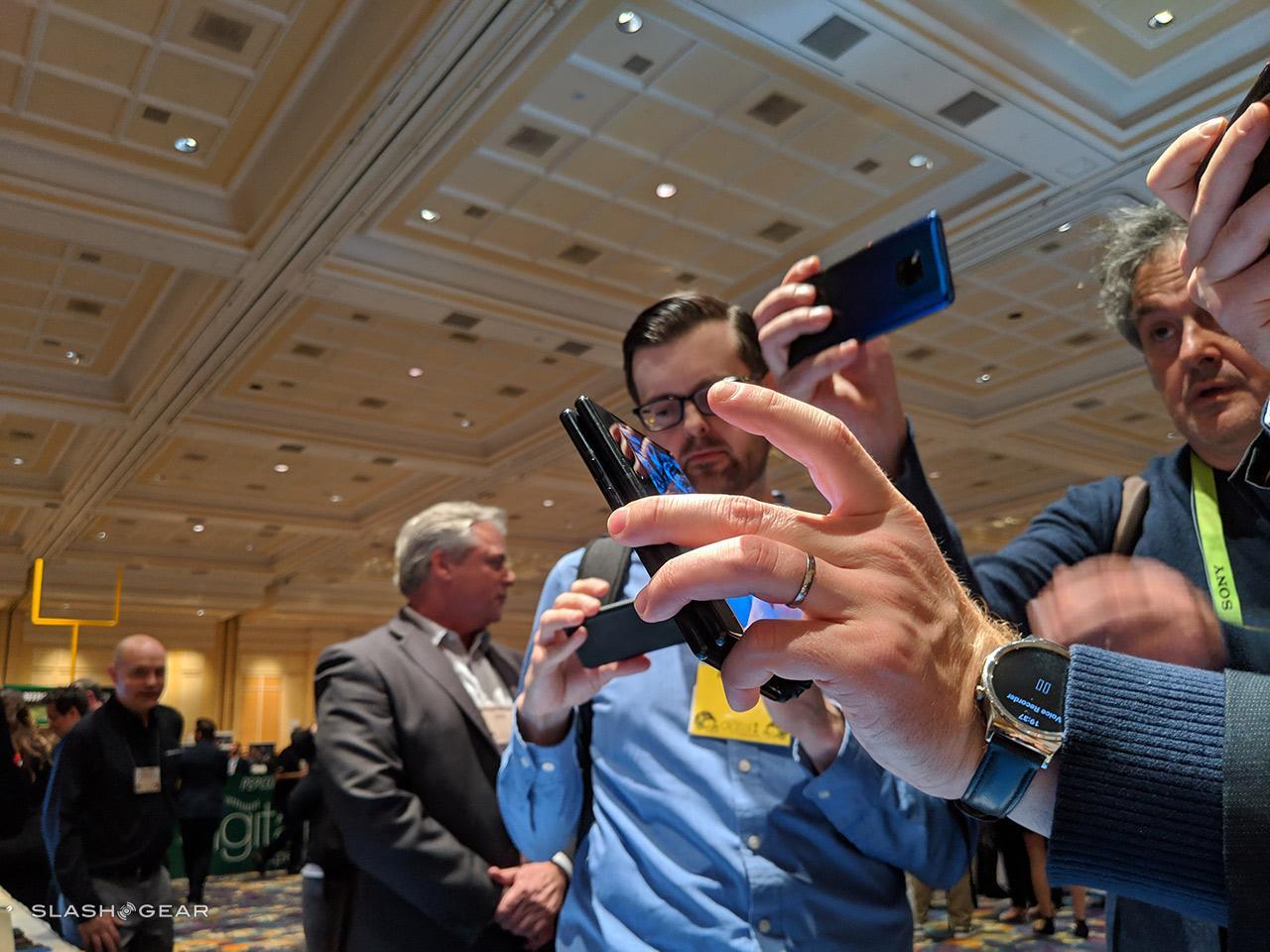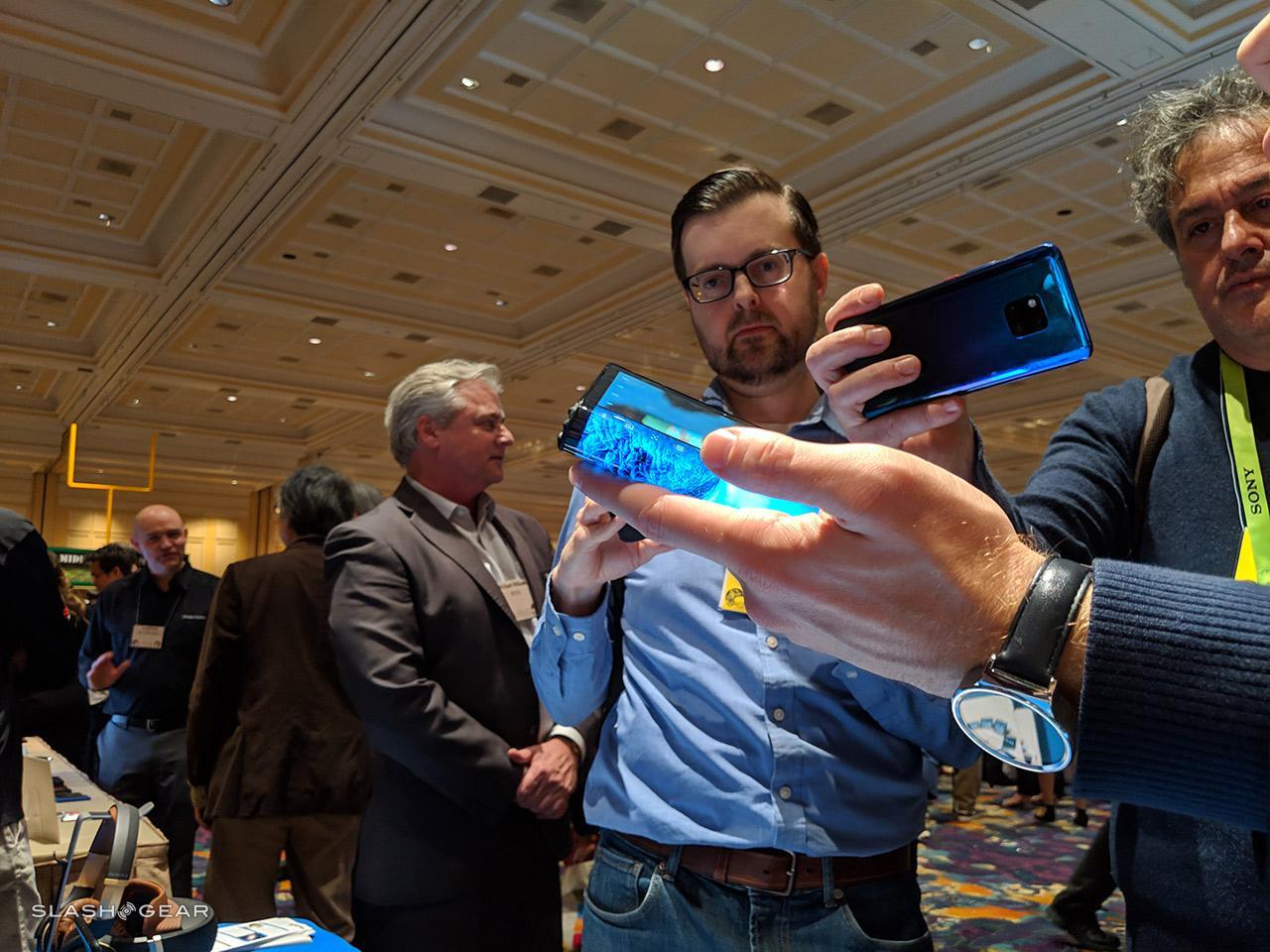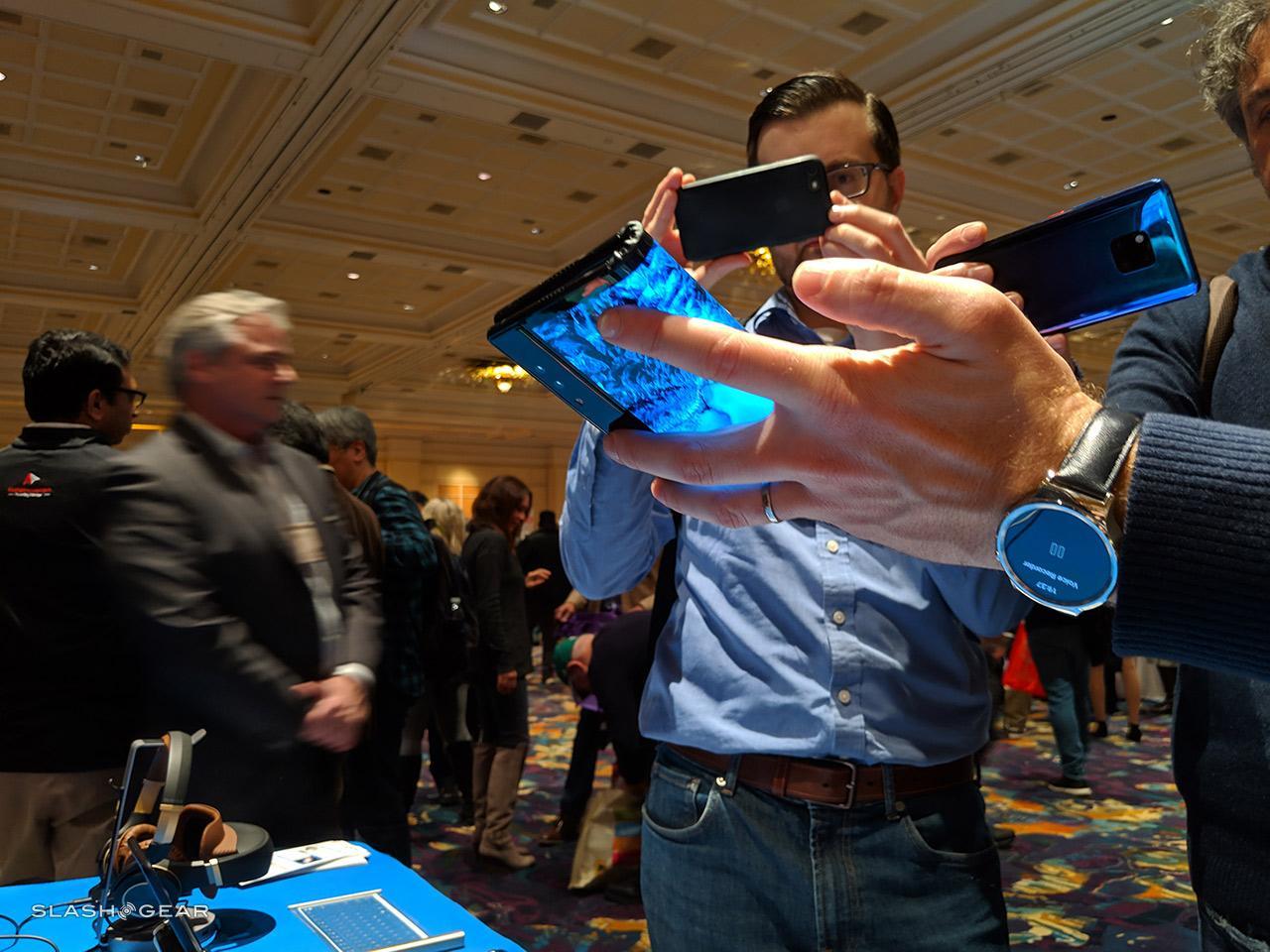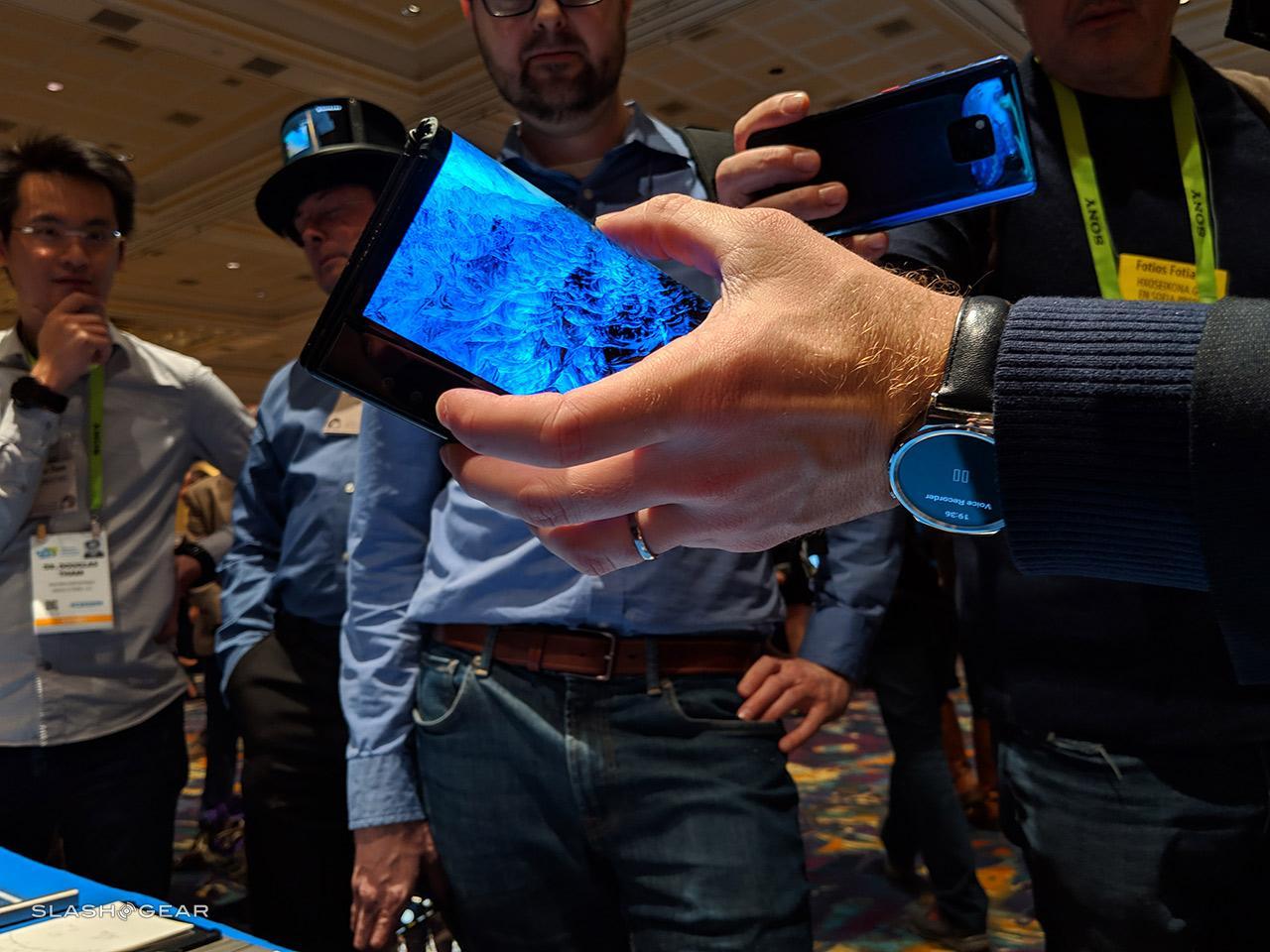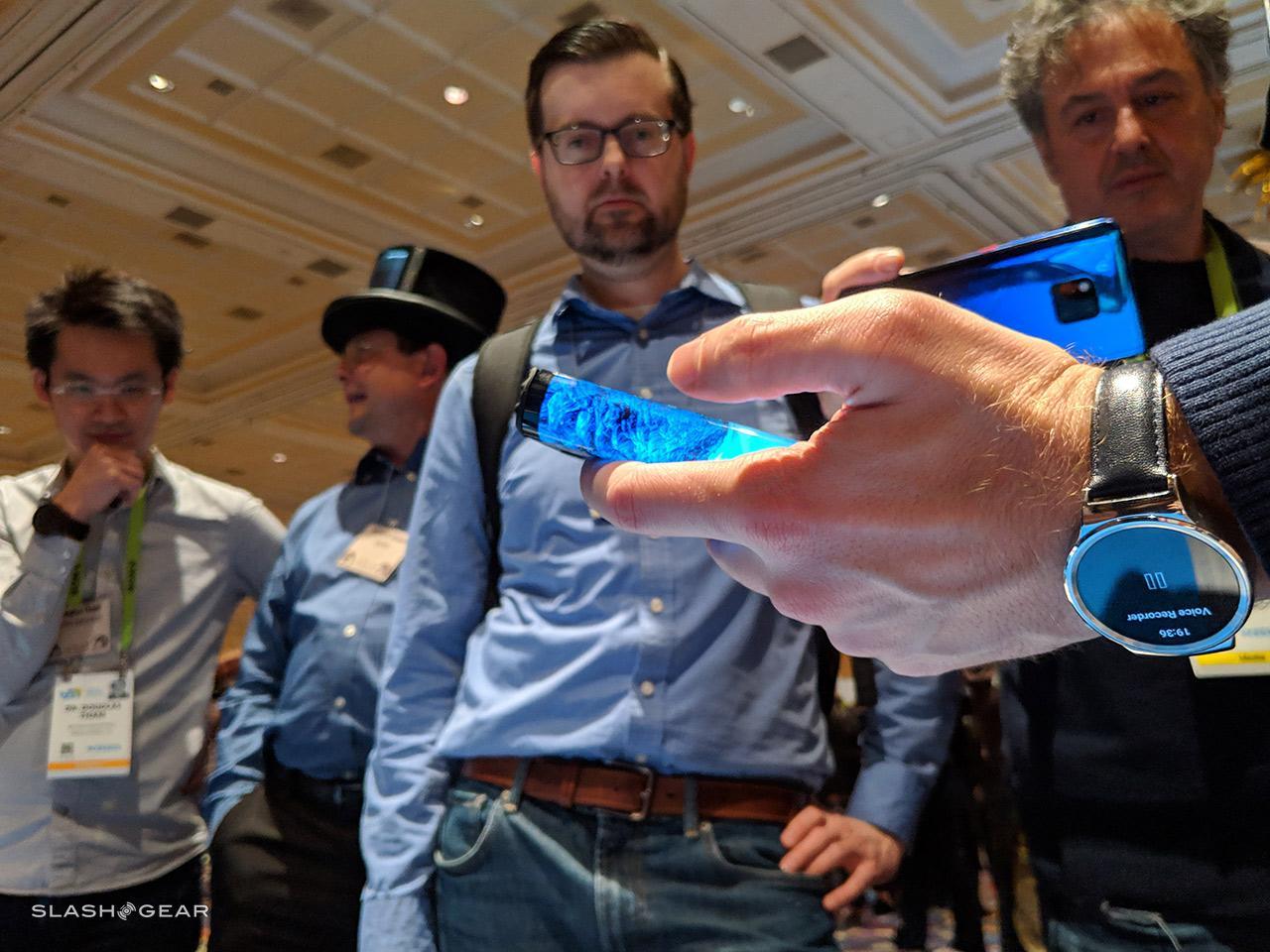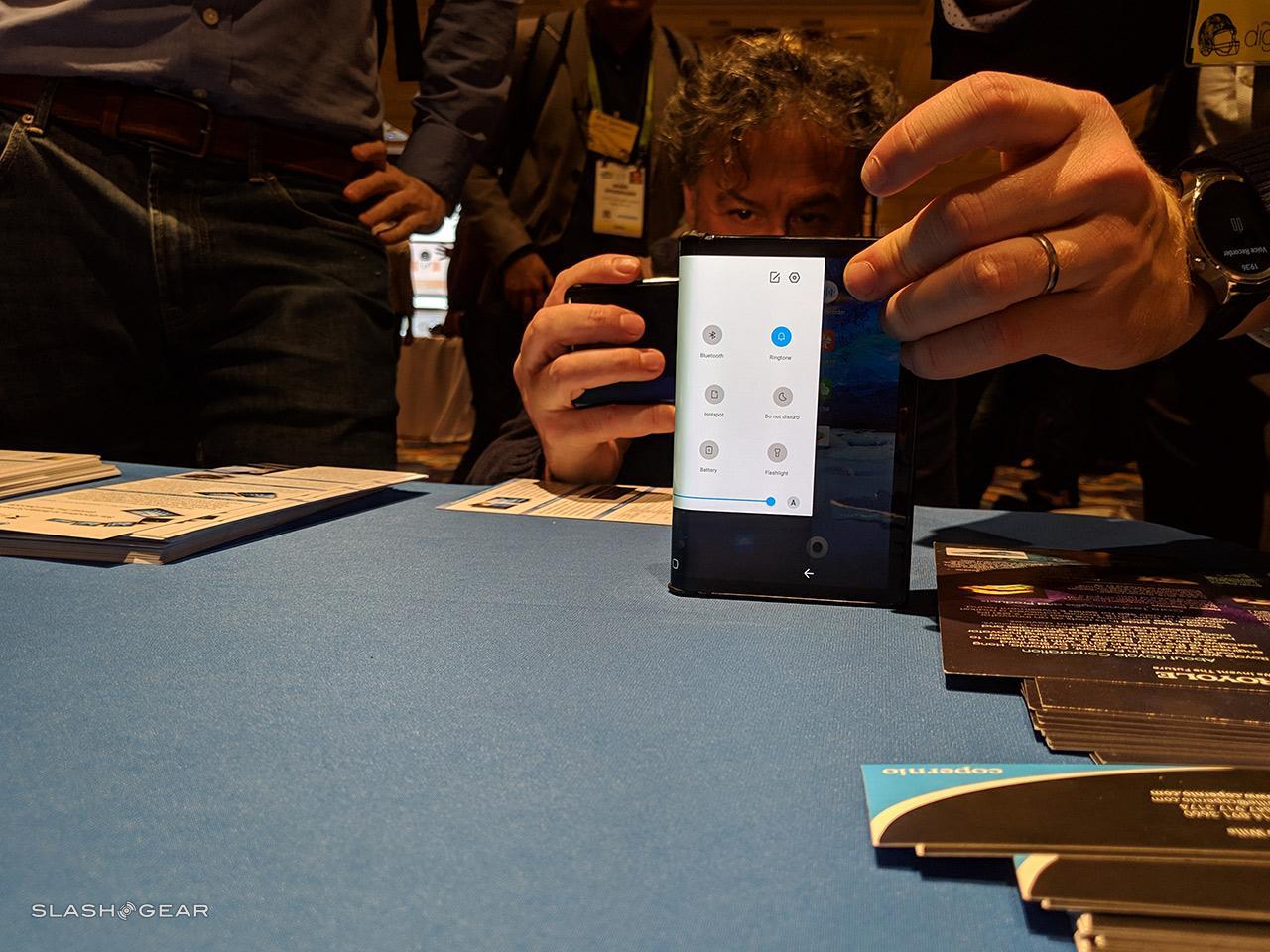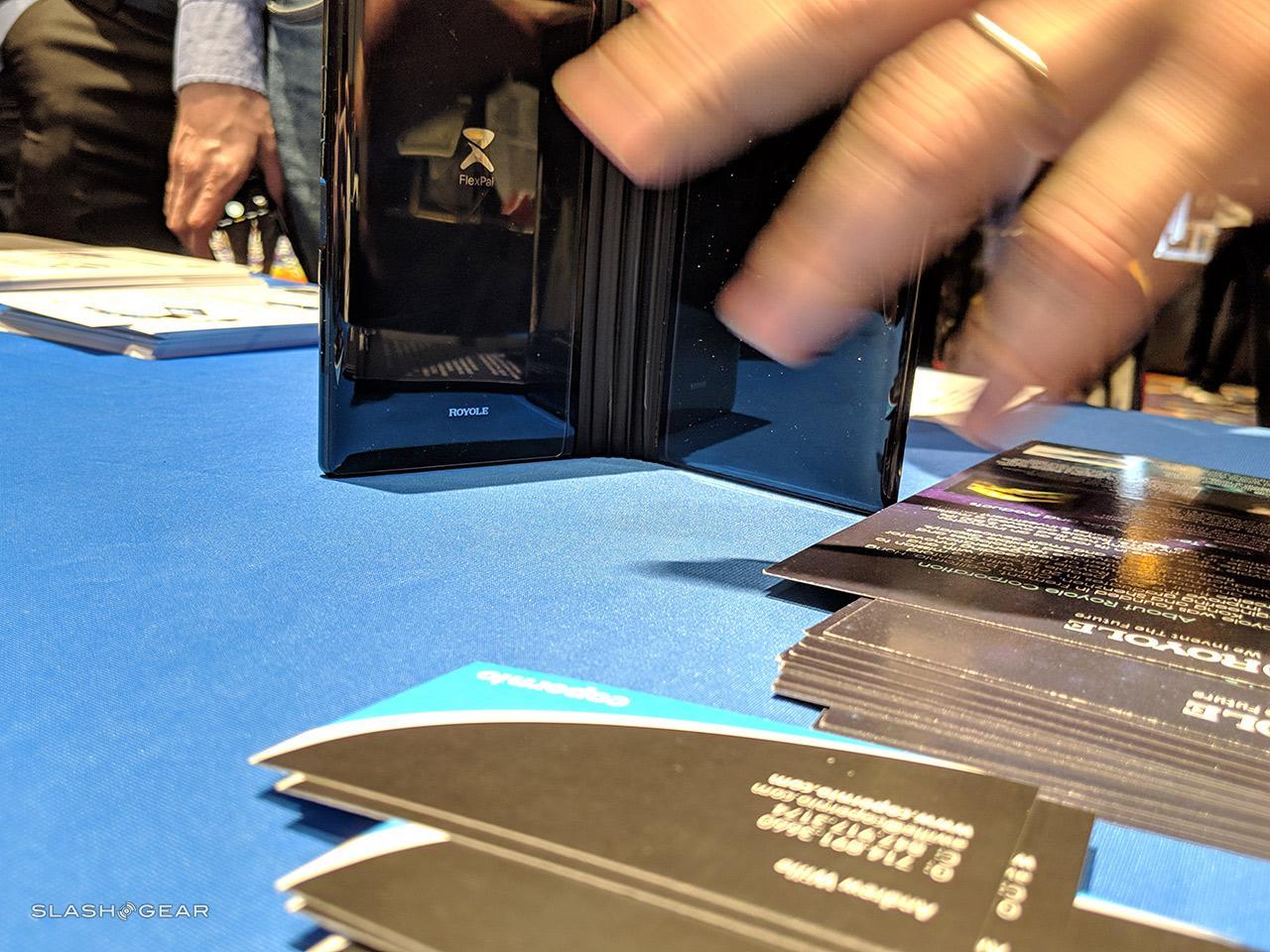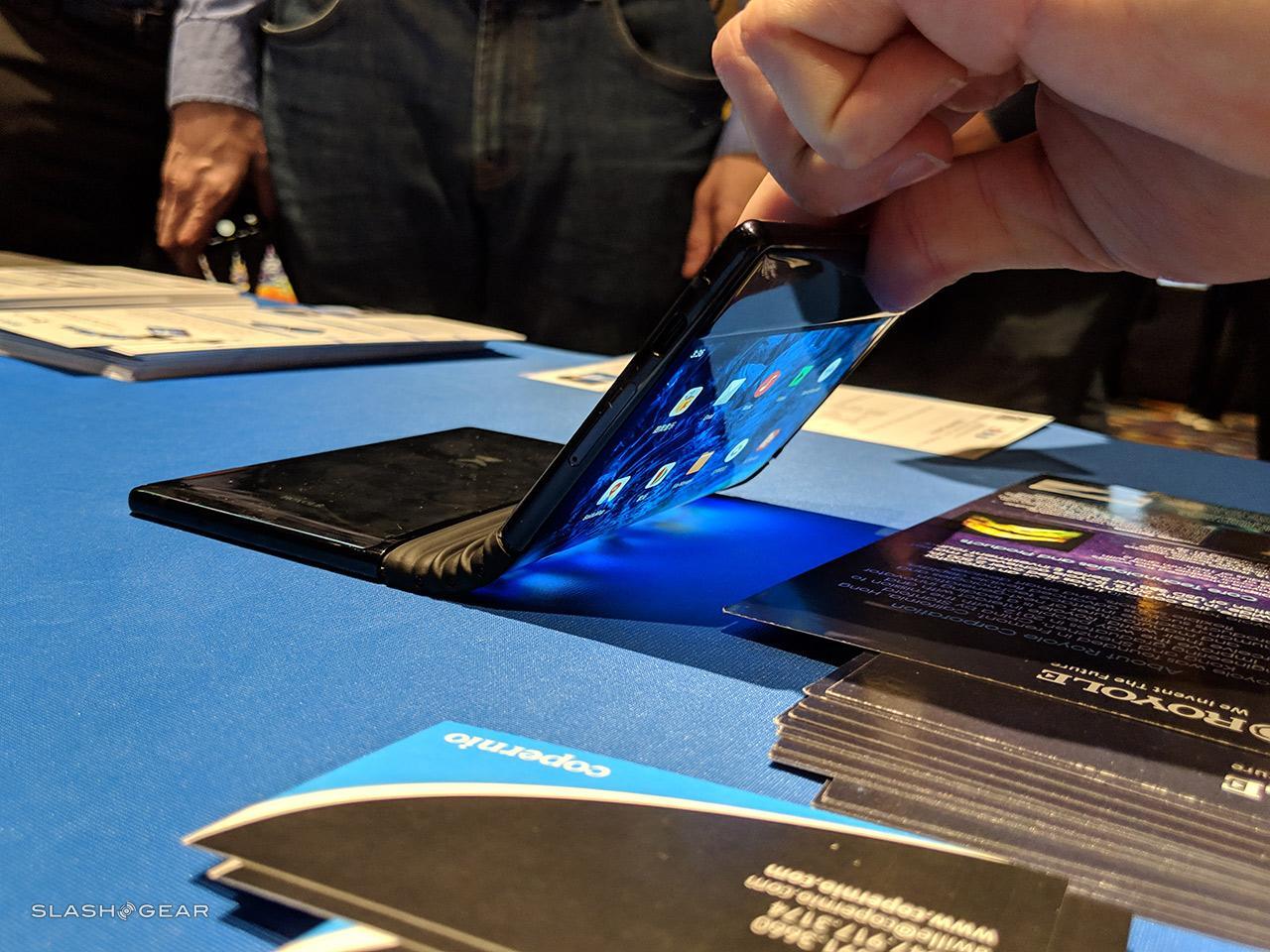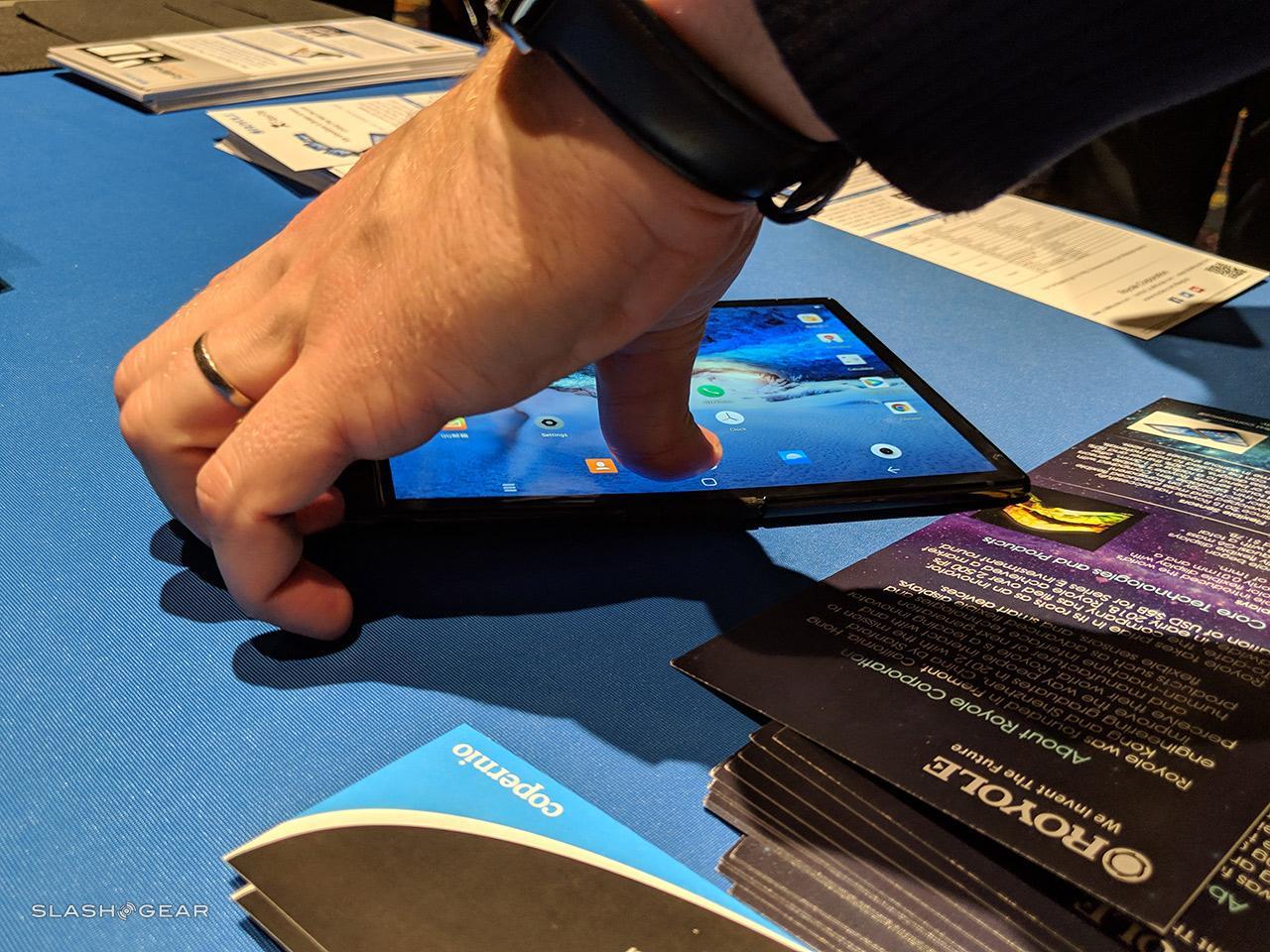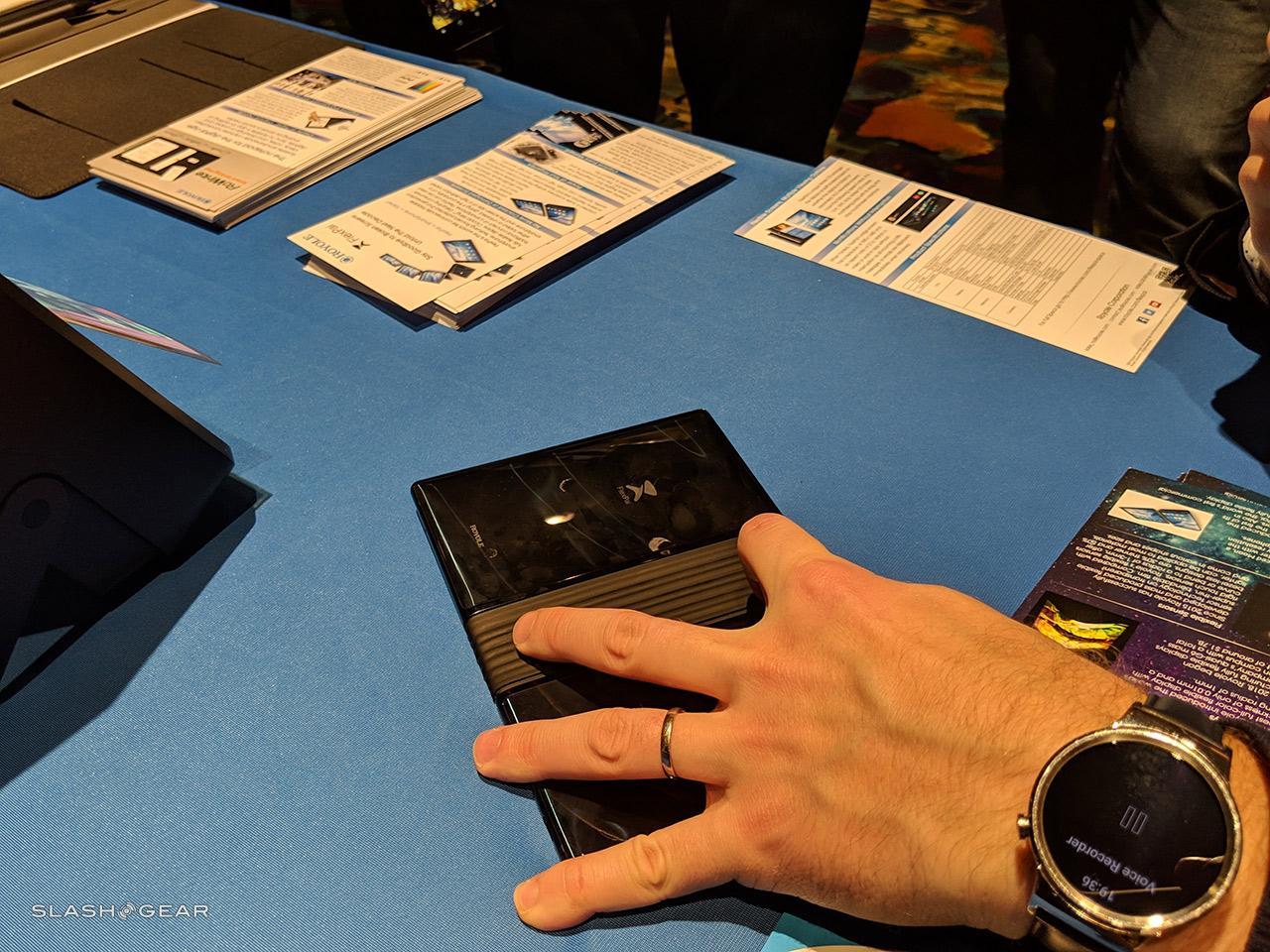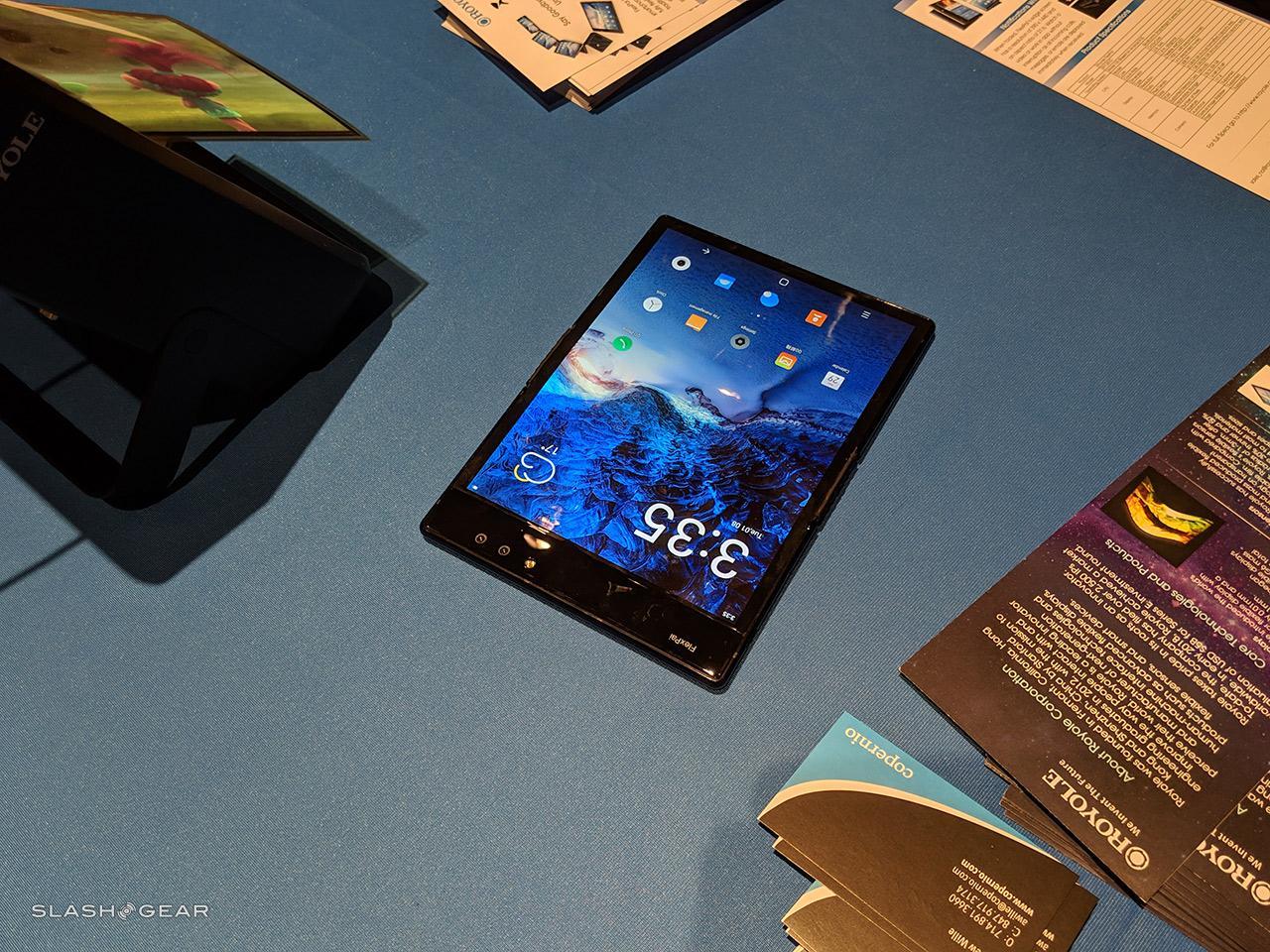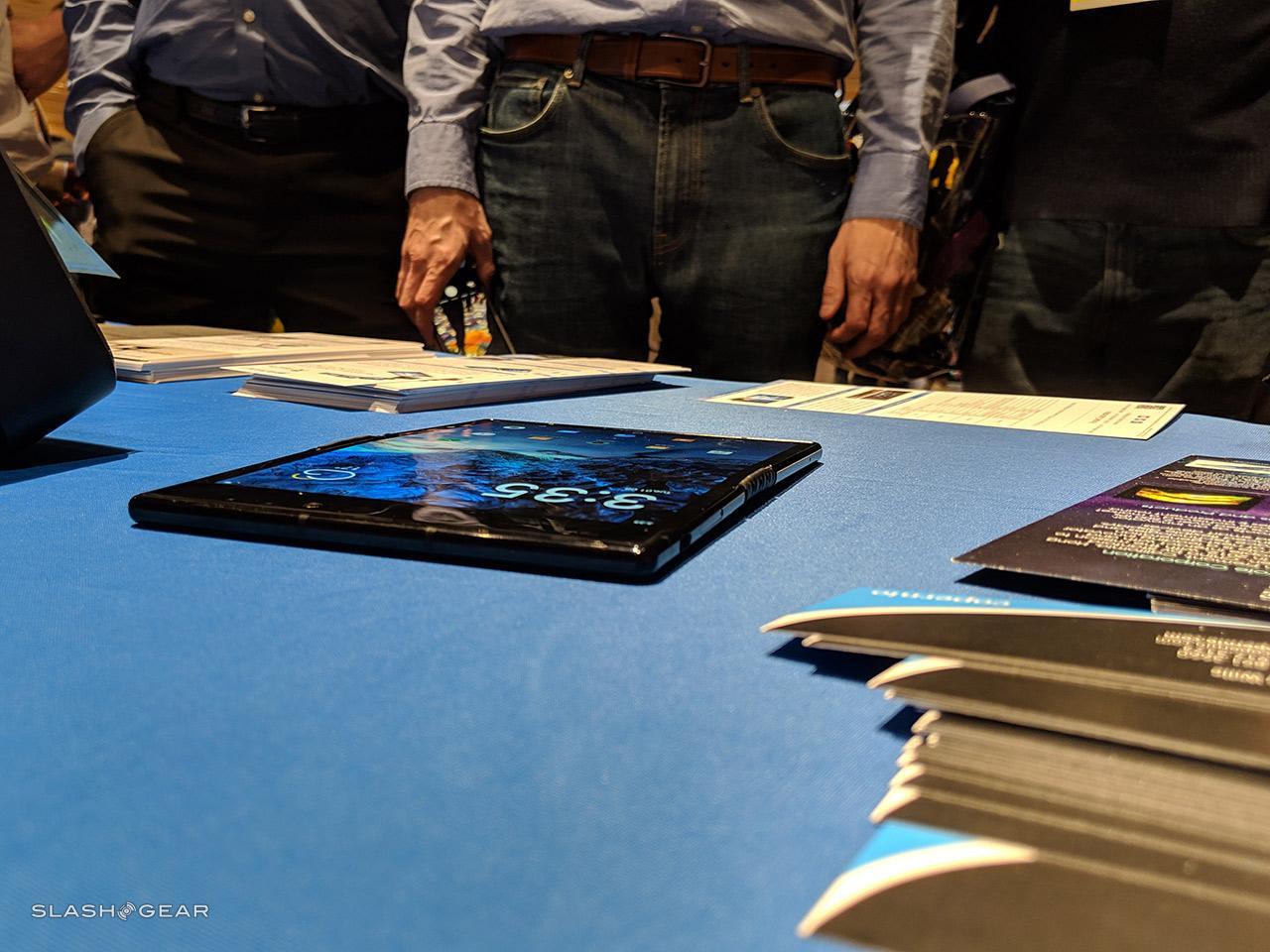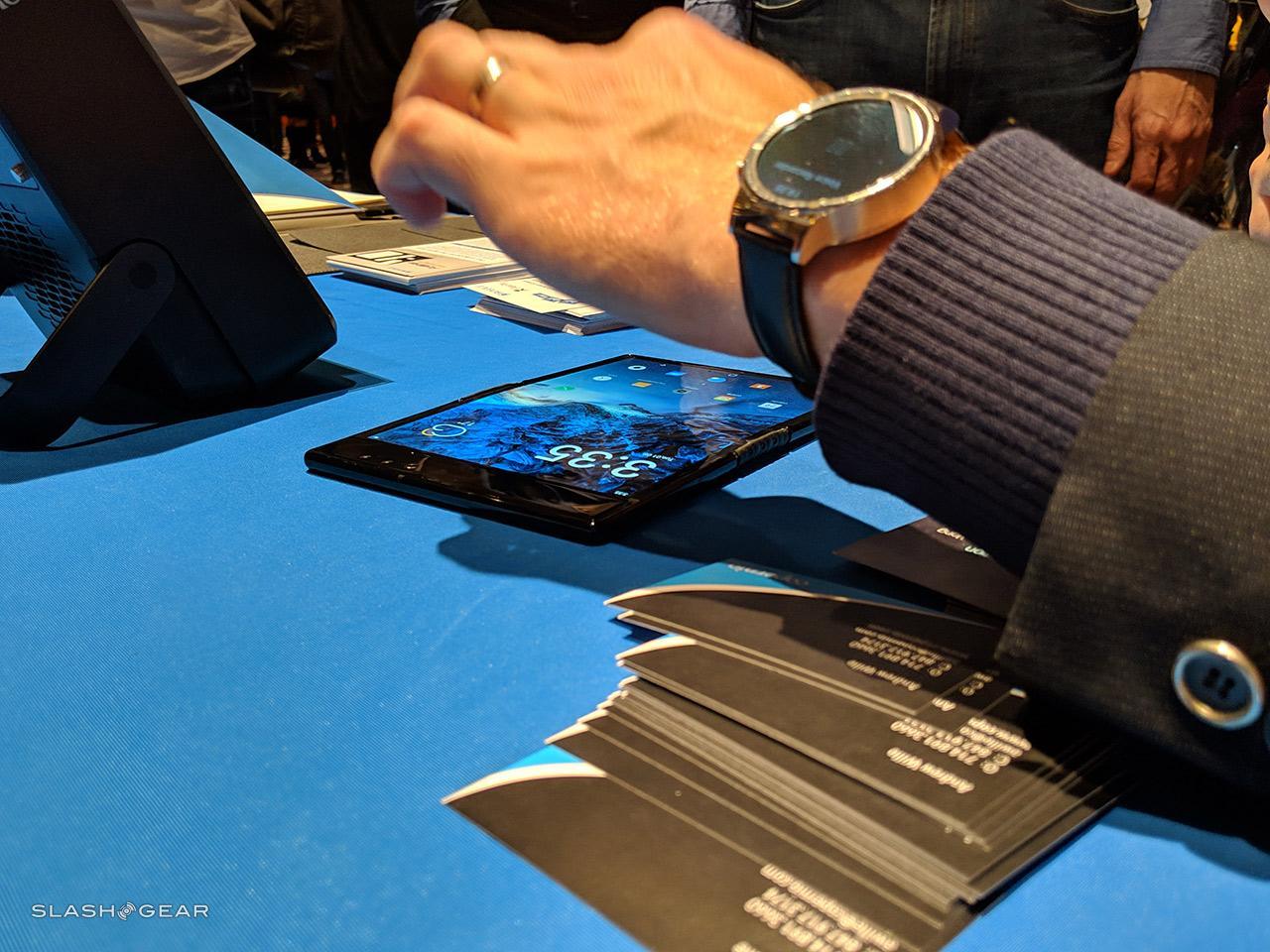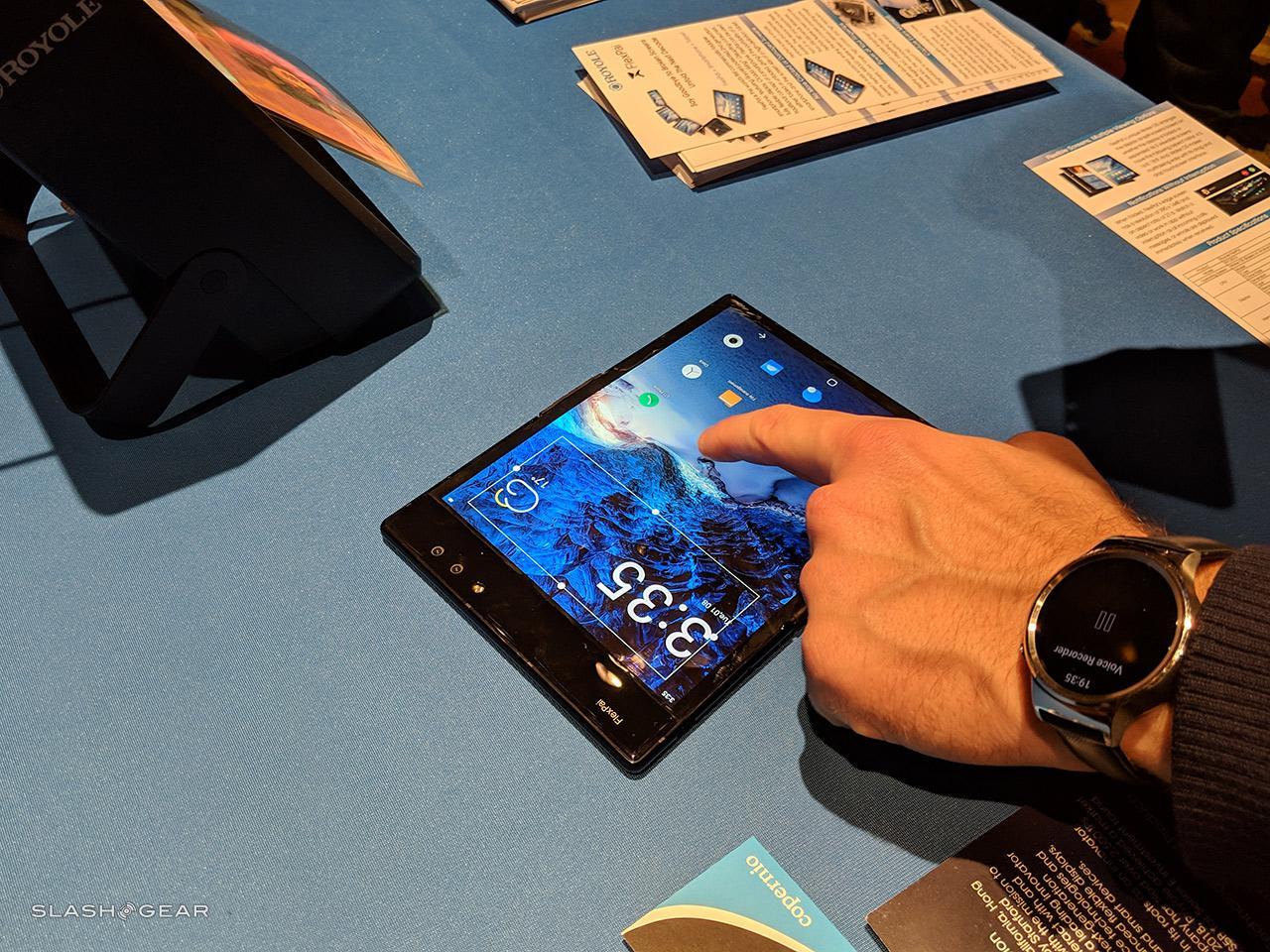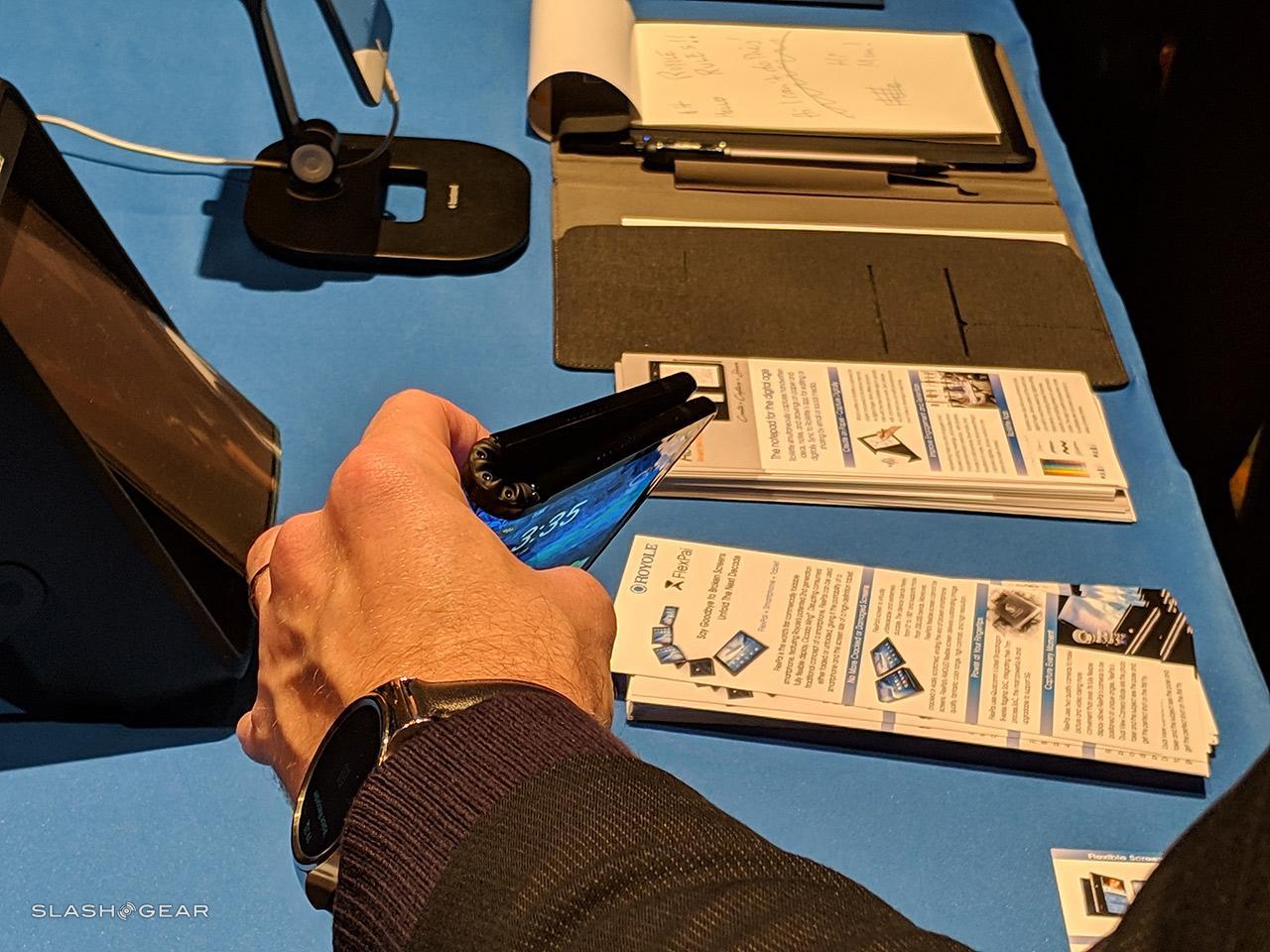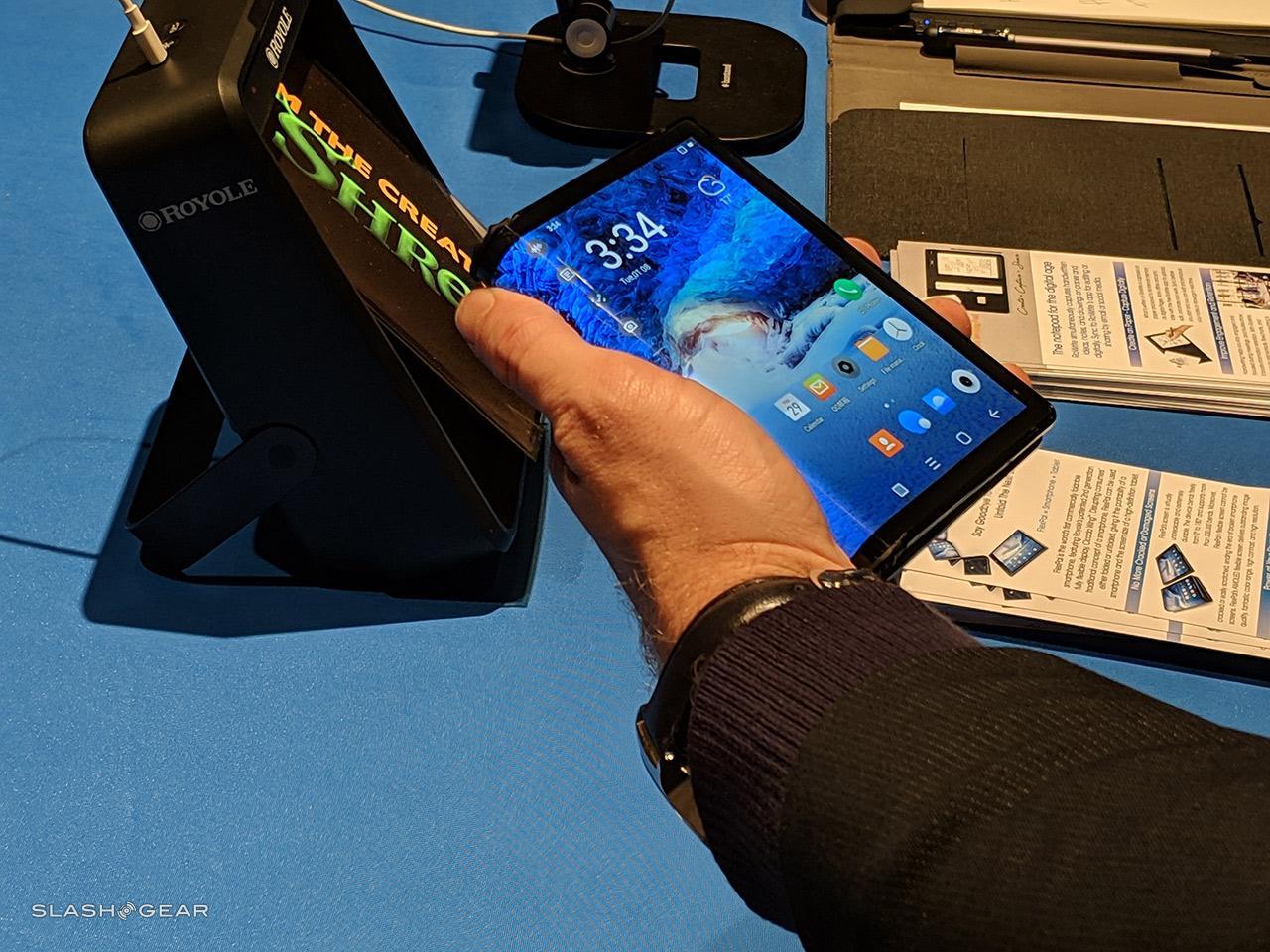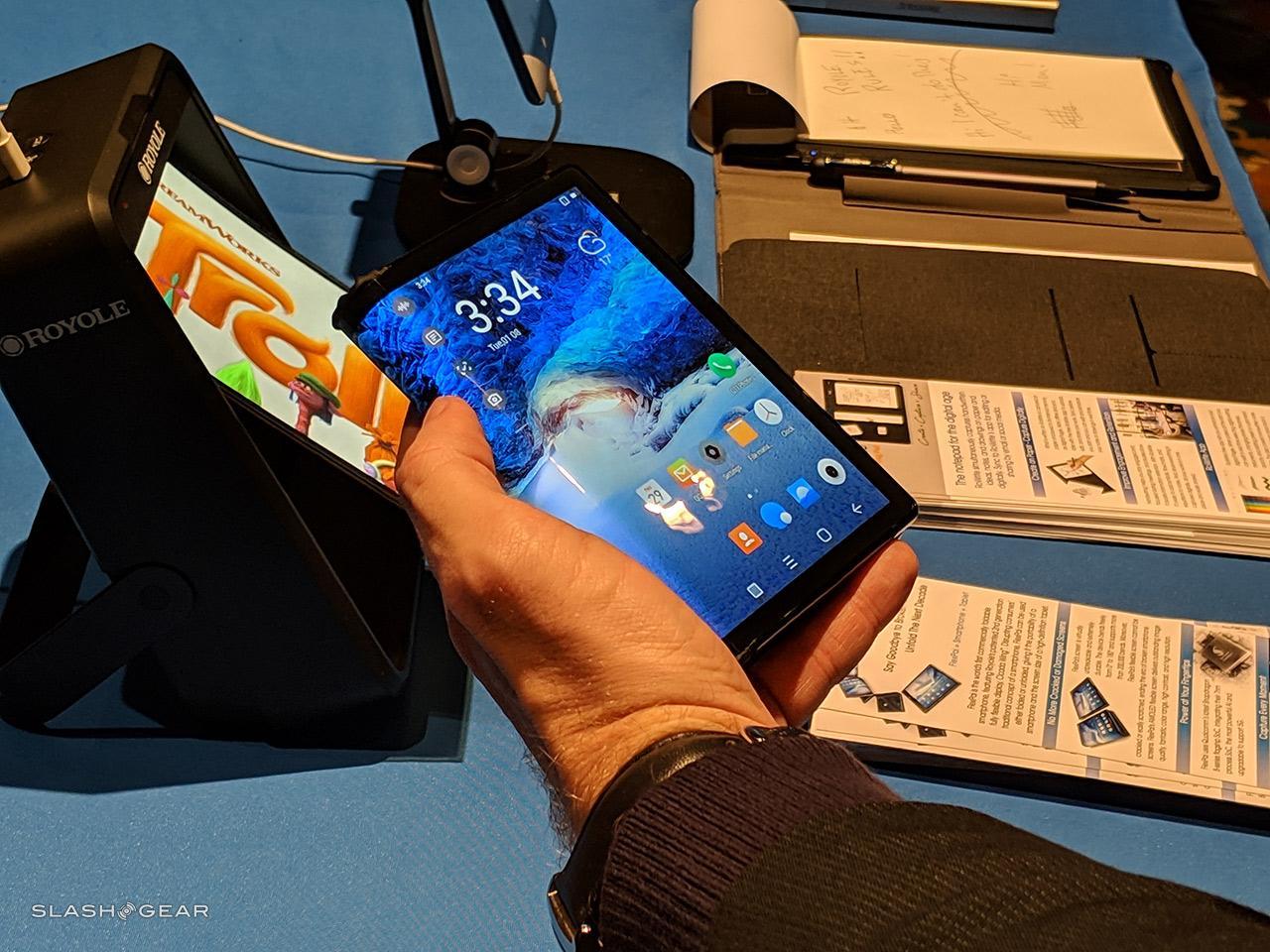Royole Foldable Display And FlexPai Hands-On: Mobile Bendy Phone Screen Time
The world's first fully functional and out-for-sale device with a foldable display came from Royole. They'll forever get to keep that as a point of distinction. They'll also be able to point out, in the future, that it was they that made the device with Android, folding backward, and without the need for a display cover – though we'd probably want one in this case. There's also the display itself, and its absolutely incredible thinness.
What you're looking at above is a display from Royole sitting in a contraption that's akin to a fan-box. The display is connected up near the logo to power and a video signal (we're watching the movie Trolls here), and behind it we've got at least one fan, blowing the display to show its lightness. The display literally flips and flaps in the wind.
What was most impressive about this display, from our perspective, was the fact that it's so very robust that its handlers from Royole said it was perfectly OK to touch. I could hold the display up and bend it around – no problem. It felt like a piece of paper, really – or a thin sheet of plastic – the sort you might've used on a schoolroom projector when you were younger.
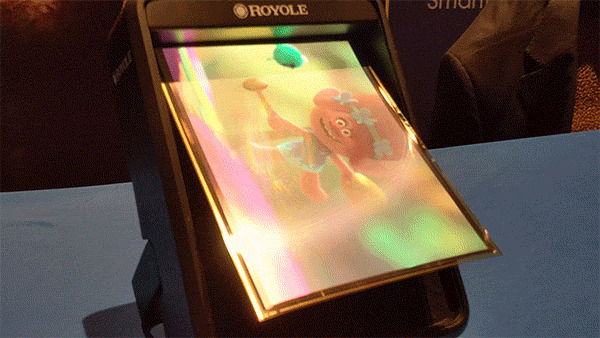
This isn't the first time Royole has shown display panels like this in public. This is the first time we've gotten up close and personal with the display panel (loose, even!) from inside their Royole FlexPai. The Royole FlexPai is the "world's first commercial foldable smartphone with a fully flexible display," and they had one of those out to see, too.
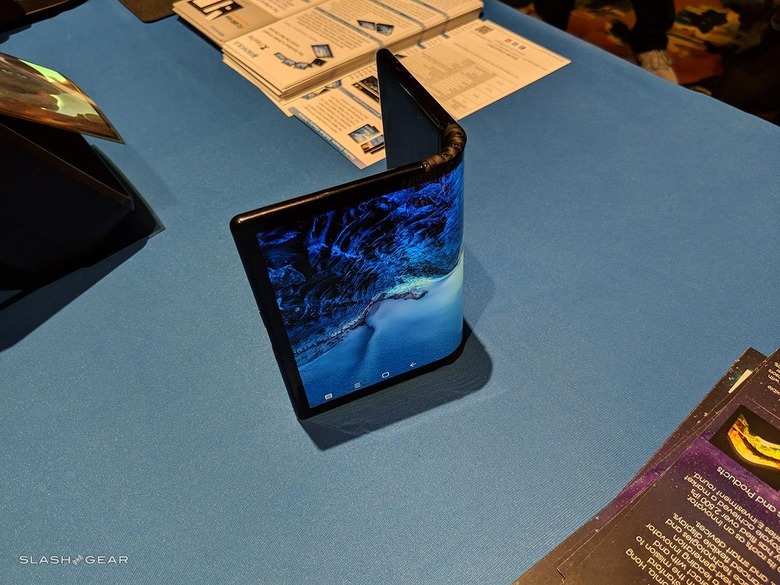
Royole's had their hand in flexible displays for several years now. They create the "world's thinnest full-color flexible display" back in 2014. That display was 0.01mm thin with a bending radius of 1mm. In June of last year (2018) Royole began their first manufacturing of fully flexible displays "at the company's quasi-G6 mass production campus."
This display tech looks decent, it doesn't become thinned-out or less viewable at its bend points, and it doesn't feel at all flimsy. On the Royole FlexPai, there's a little bit of an issue. Not necessarily something that'll make the phone unusable, but still – it doesn't really stay flat when it's flat, and it's clear where the fold was made. These seem like things that should've been addressed in manufacturing – but there they are.
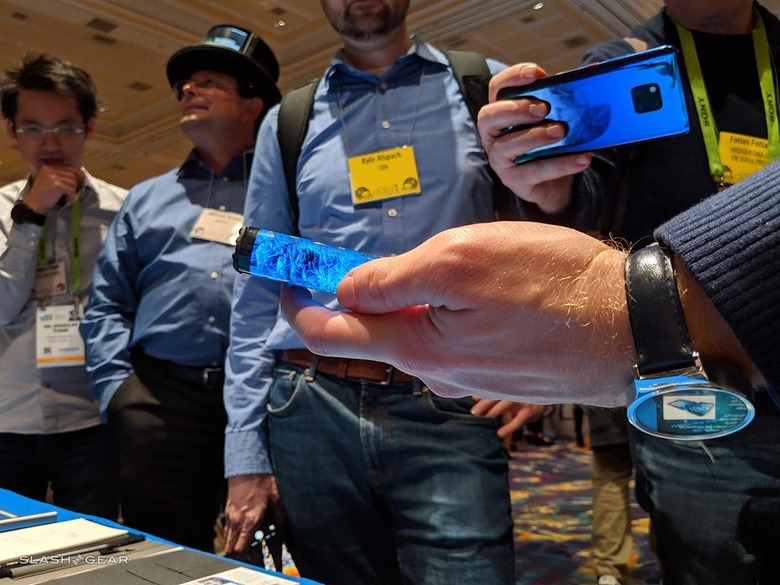
The display quality and touch quality seem to be pretty great. When I first saw the FlexPai sitting on a table at CES, I thought it was just a model. The display on this device has lights so close to the surface, it seems like its been printed on top.
That makes sense, of course, since there's no display glass between the display and our fingers/eyes. The little bit of distance added between the surface of the phone and the display panel on most phones makes them look and feel ever-so-slightly less impressive than devices like the FlexPai.
Having no display glass for protection of the panel has its down side, too – less protection means bigger potential for damage. It'll be interesting to see how the rest of the foldable display smartphone makers address the balance between positive and negative elements here, too.
Royole's technology is extraordinary – largely because they're the only people in the world to have a foldable display phone right this minute. Once the rest of the industry catches up (in as little as a few weeks), they'll face massive competition. Here's hoping they stay in the mix while the bigger brands jam their way into this arena over the next year.

